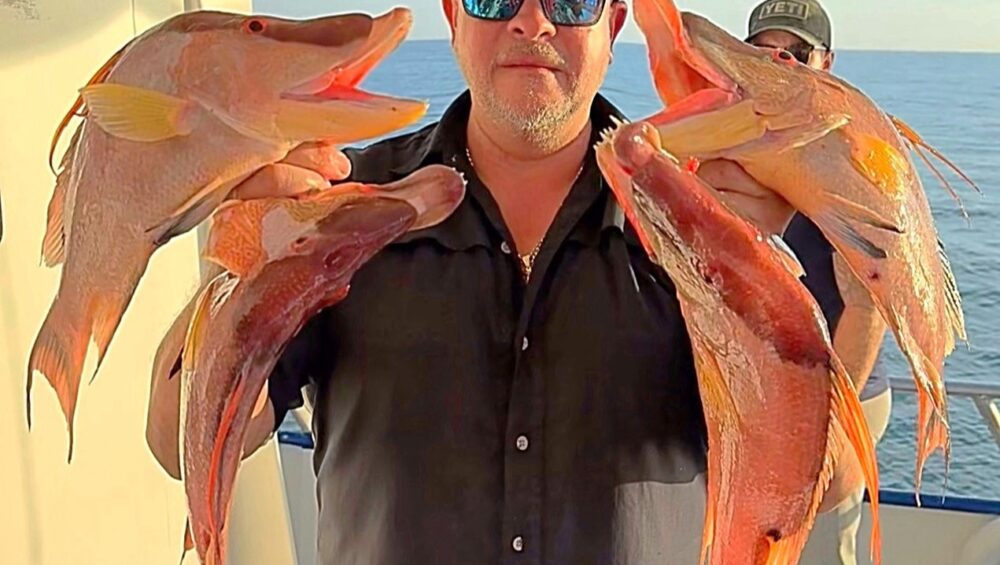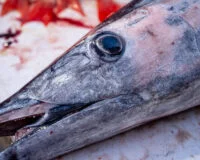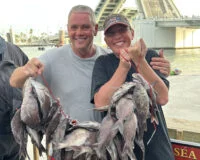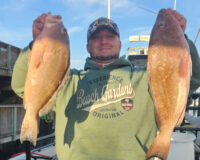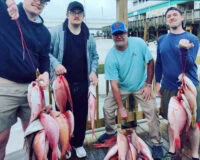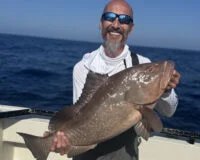Inshore Fishing Report
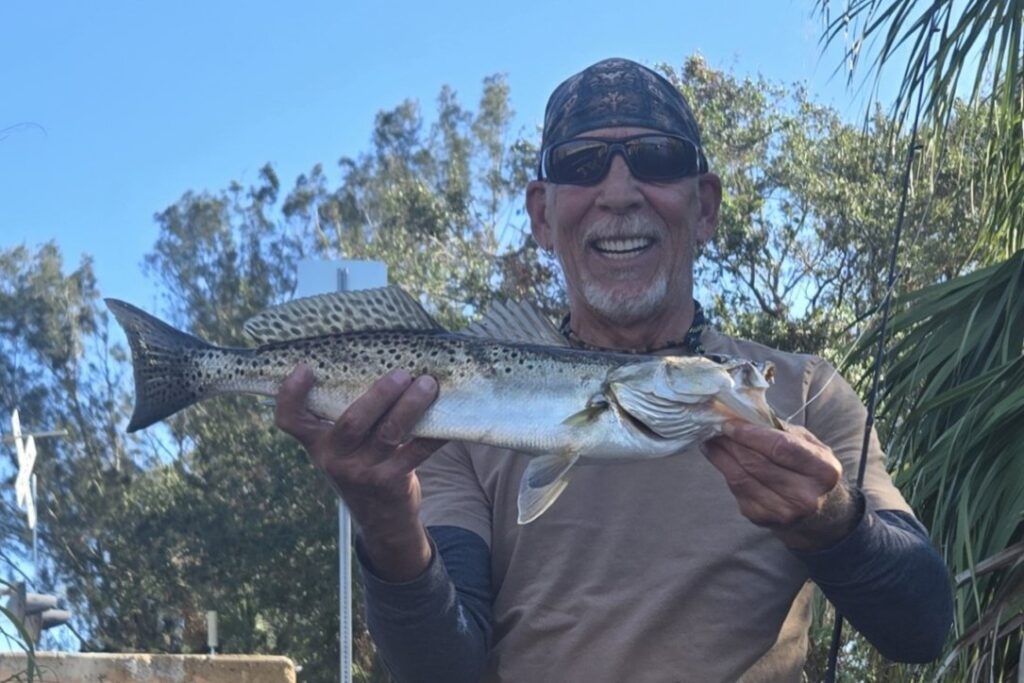
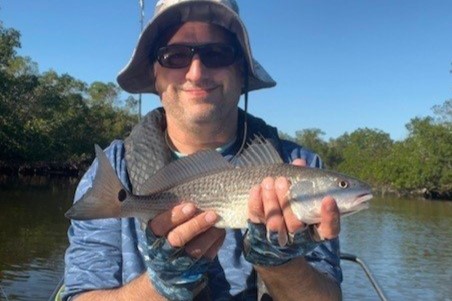
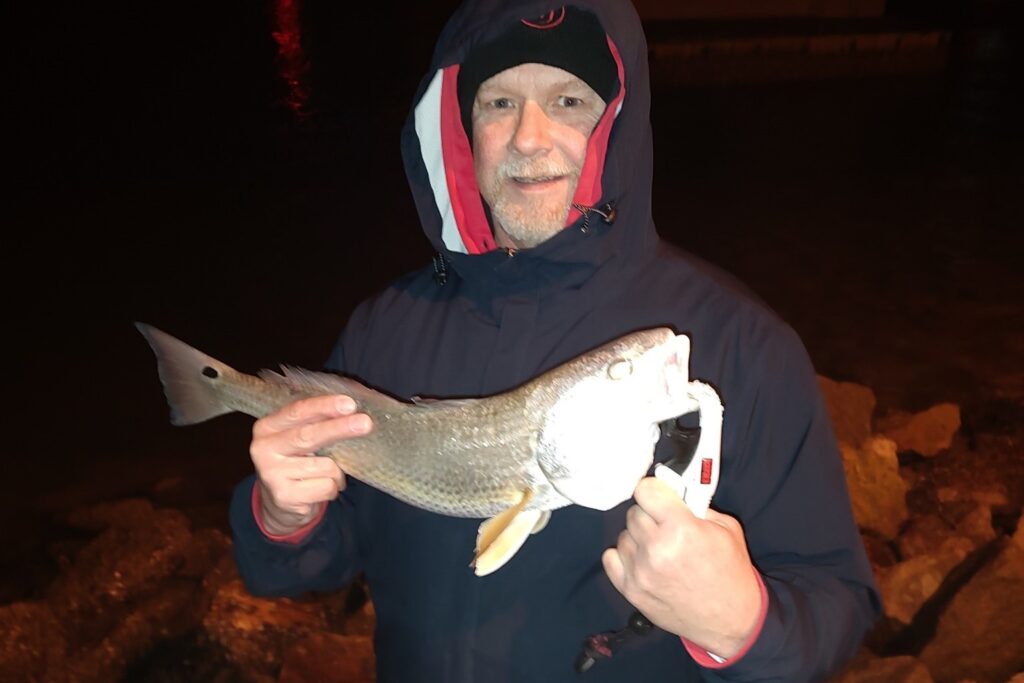
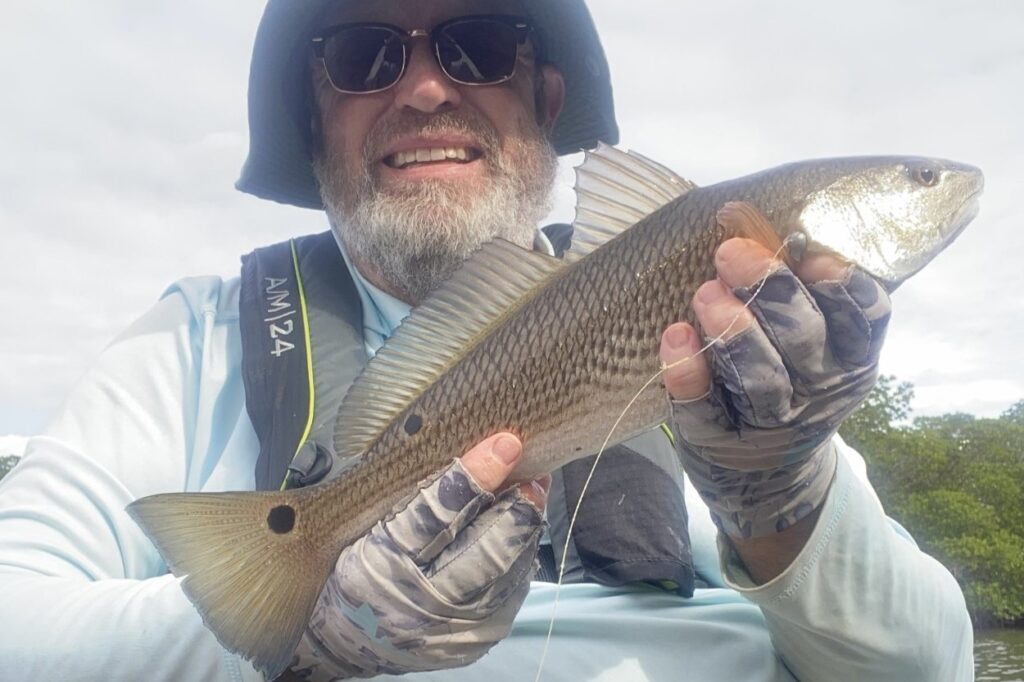
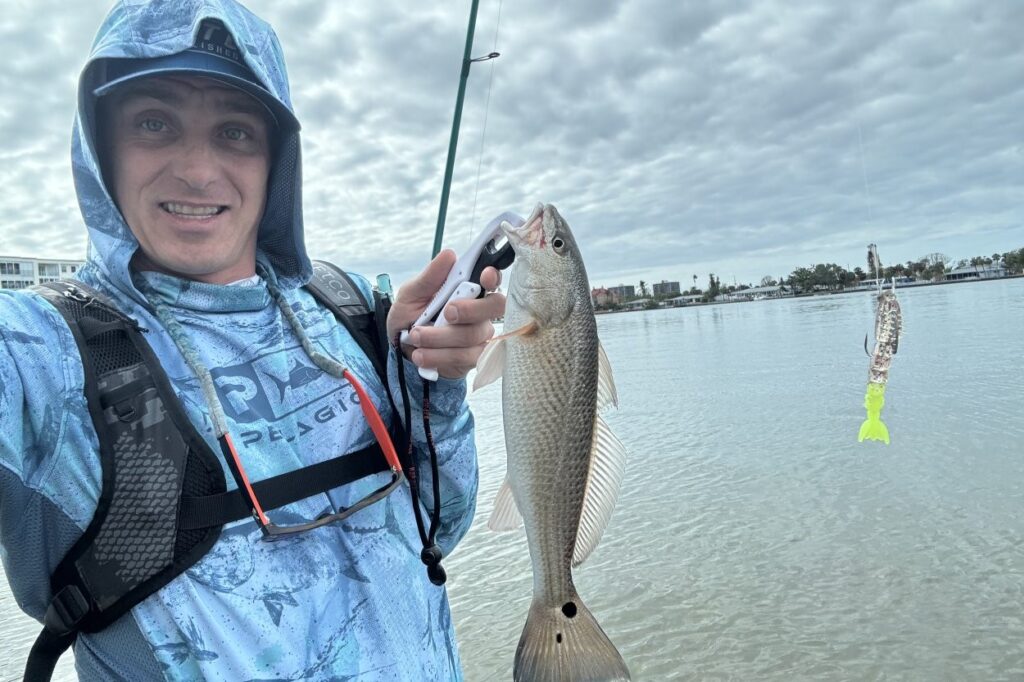
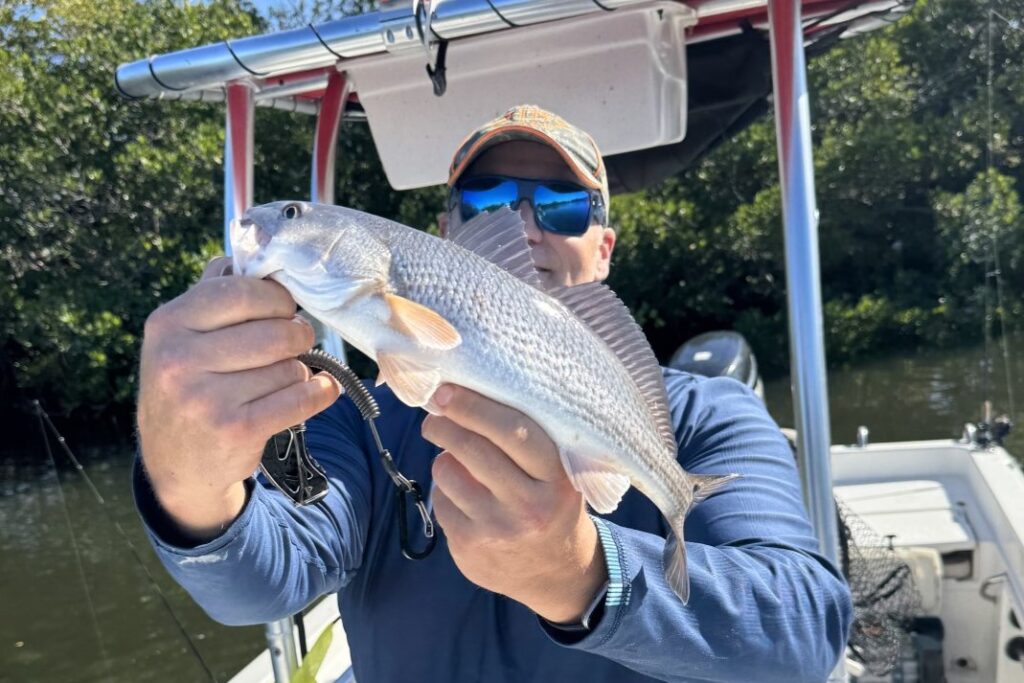
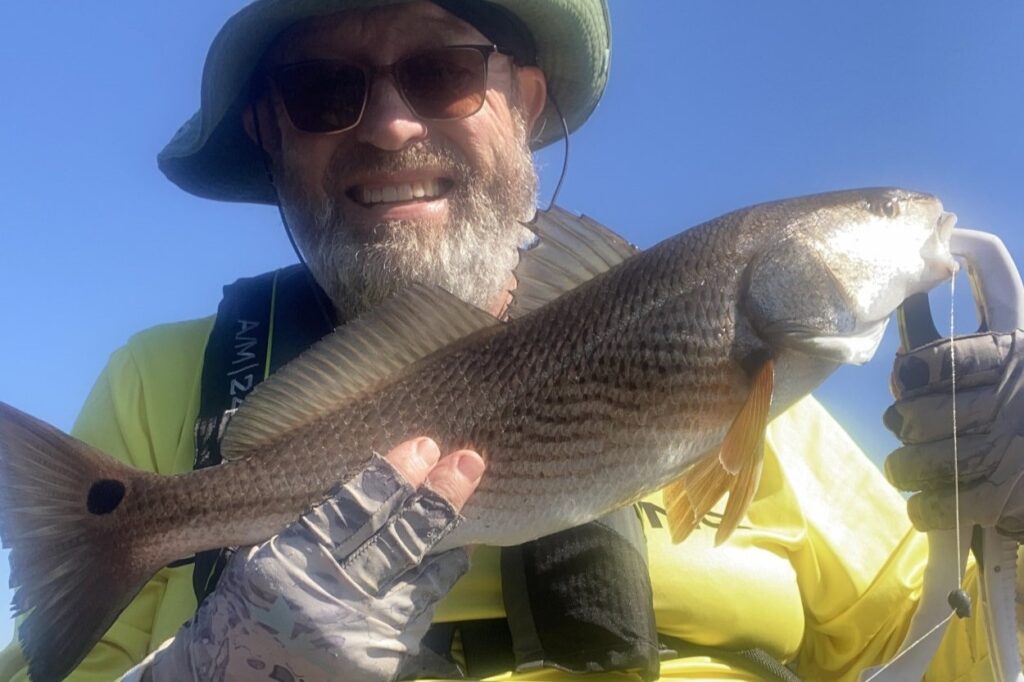
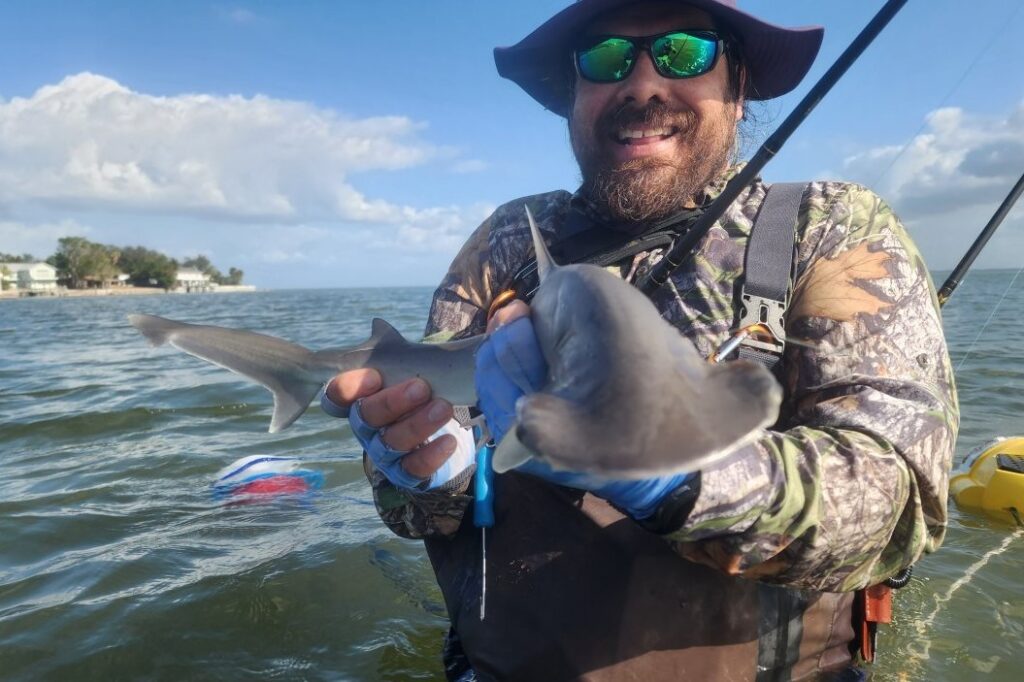
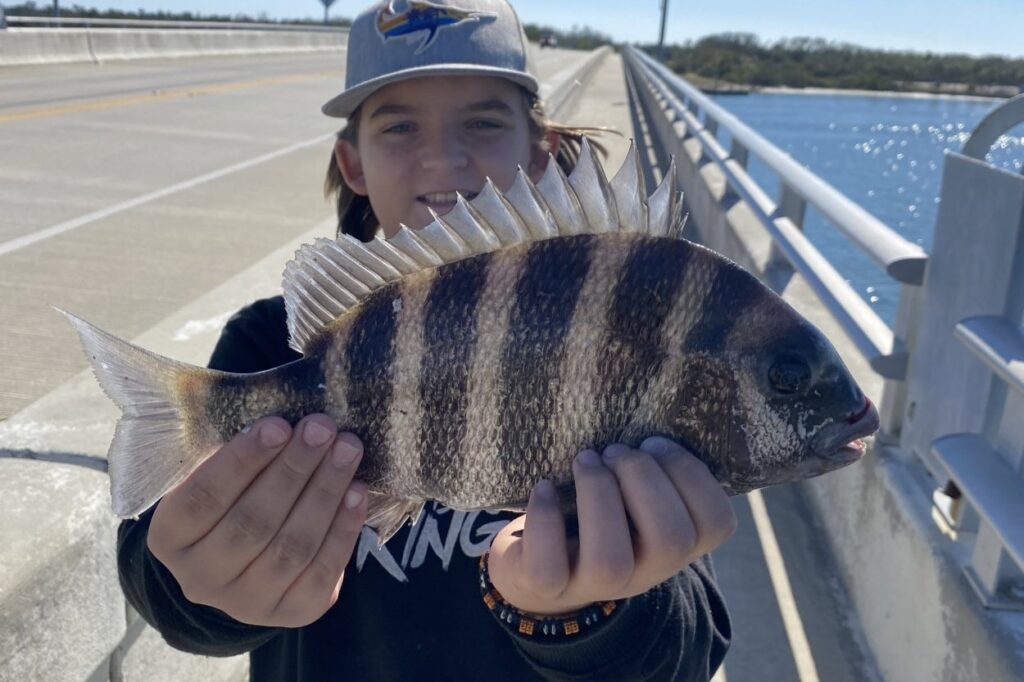
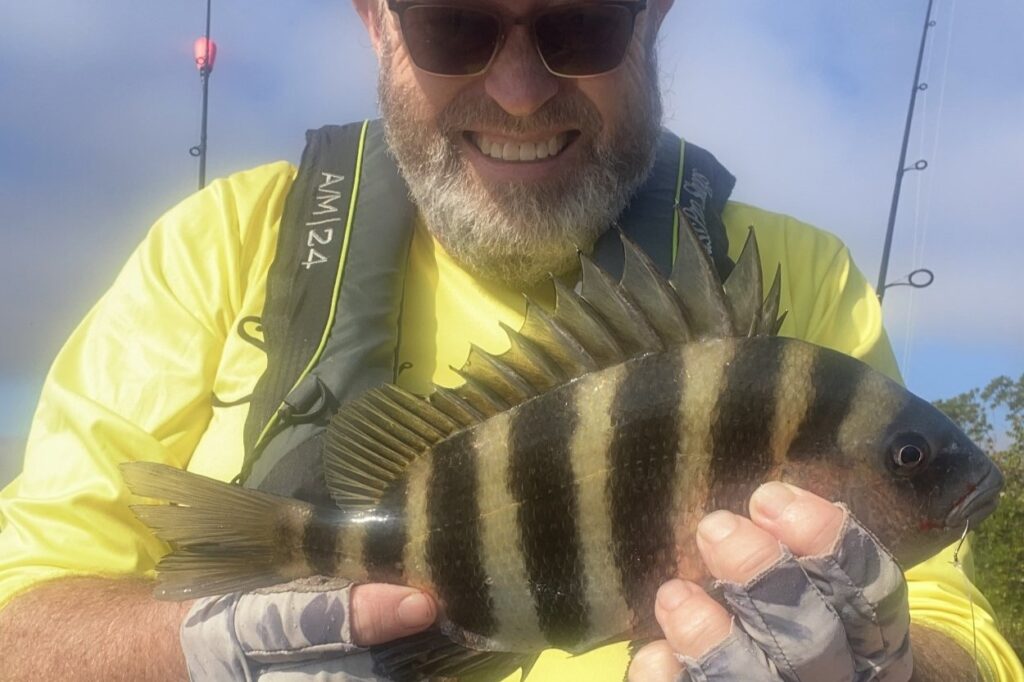
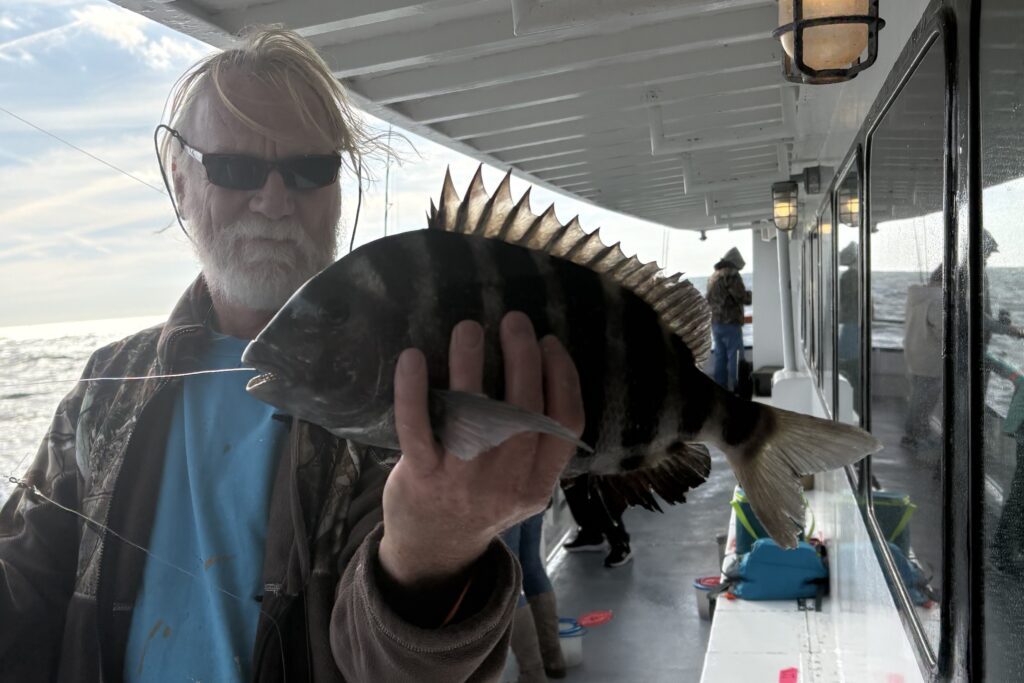
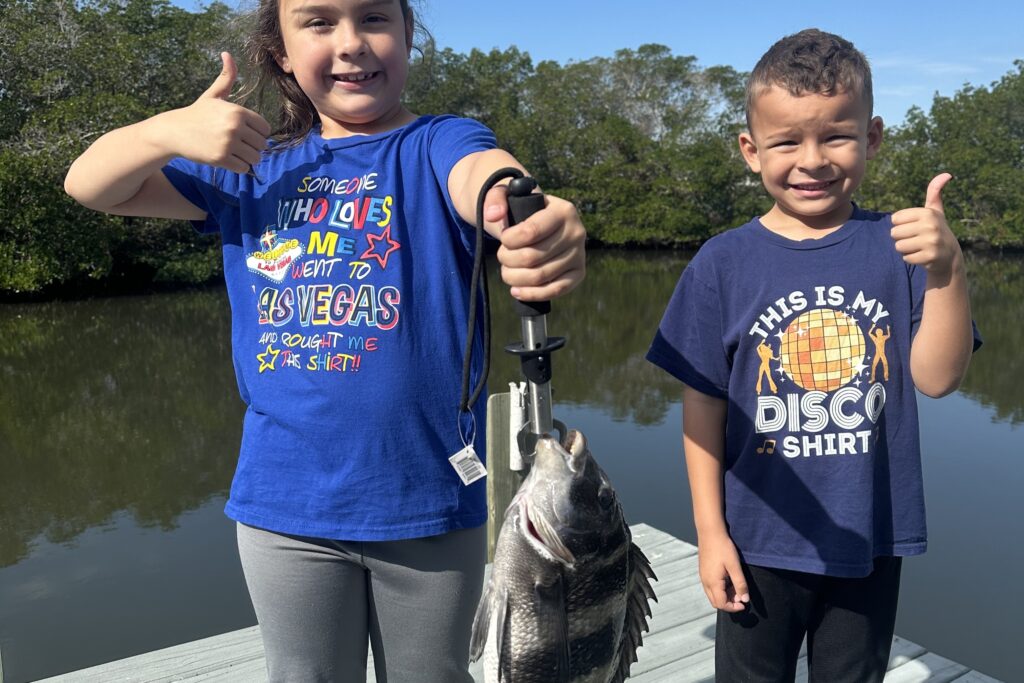
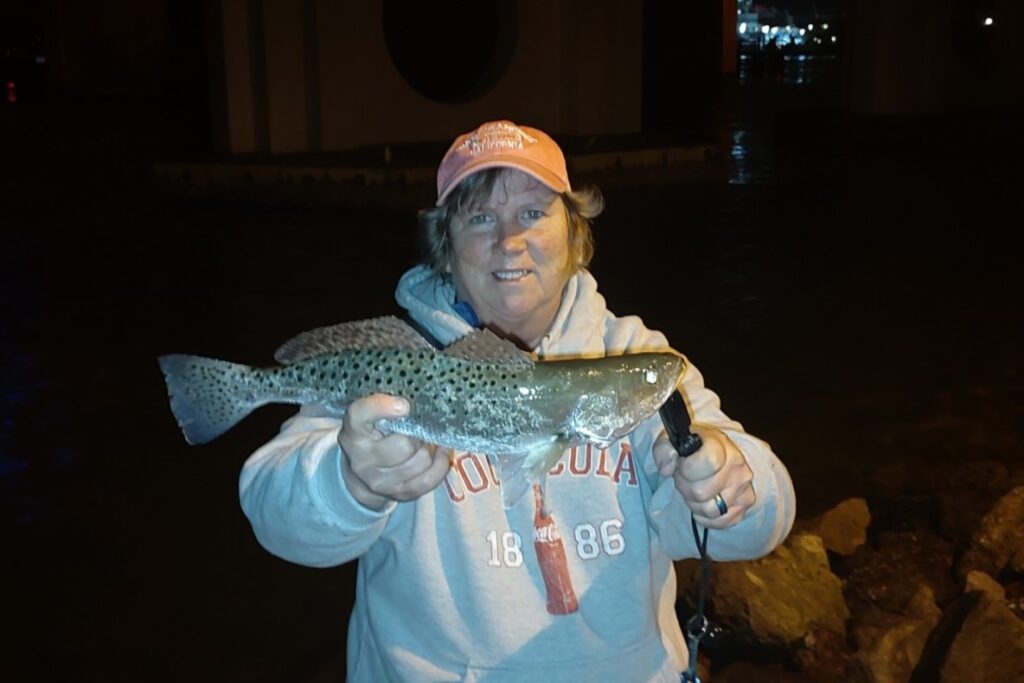
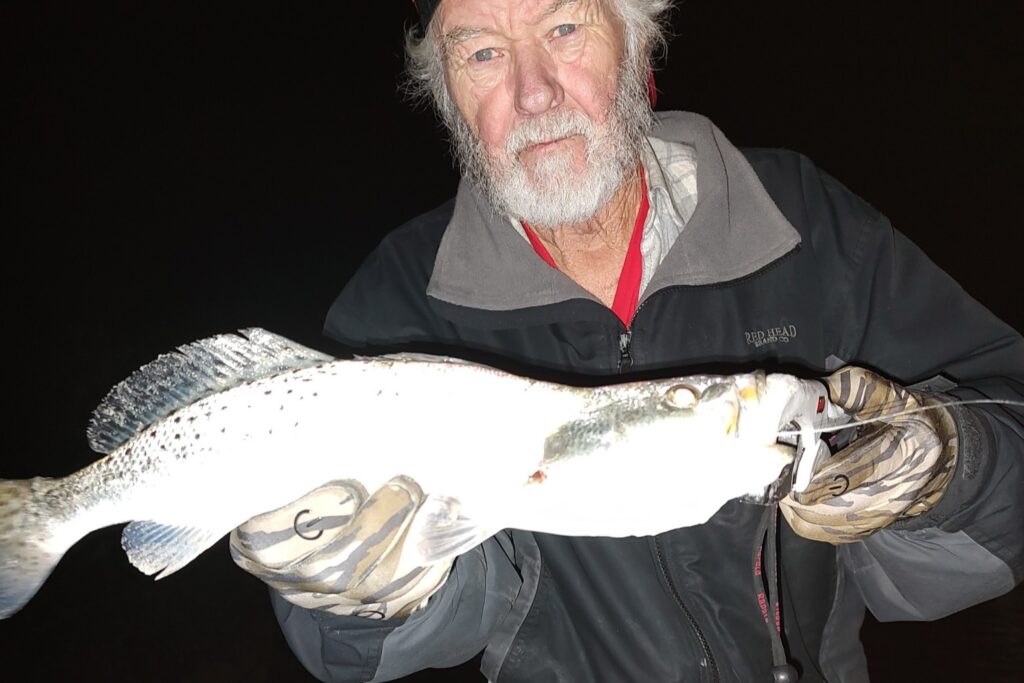
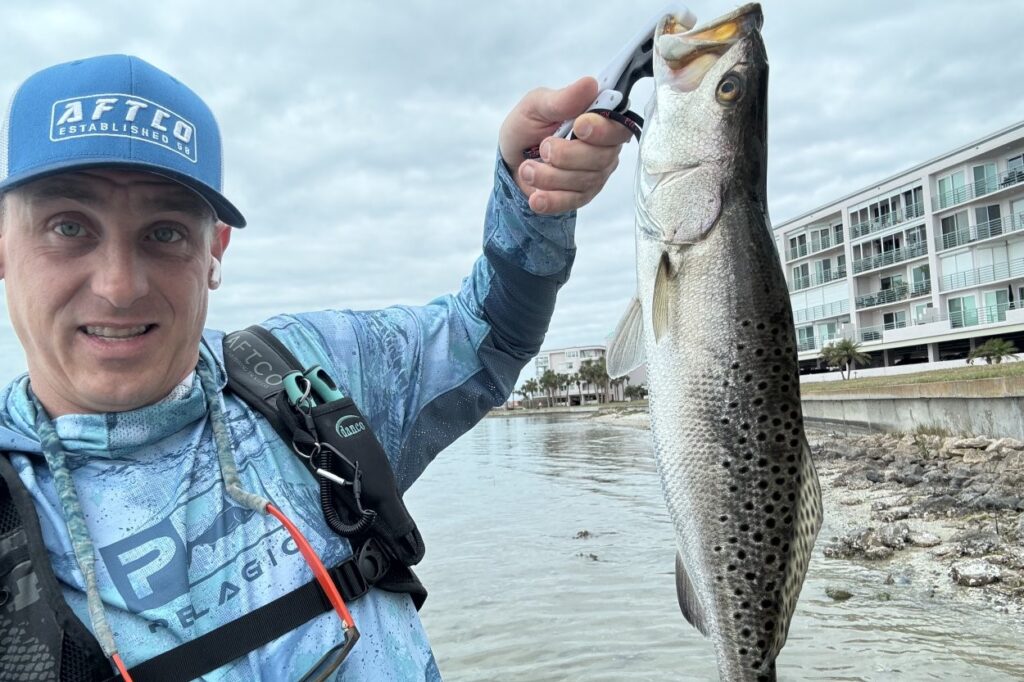
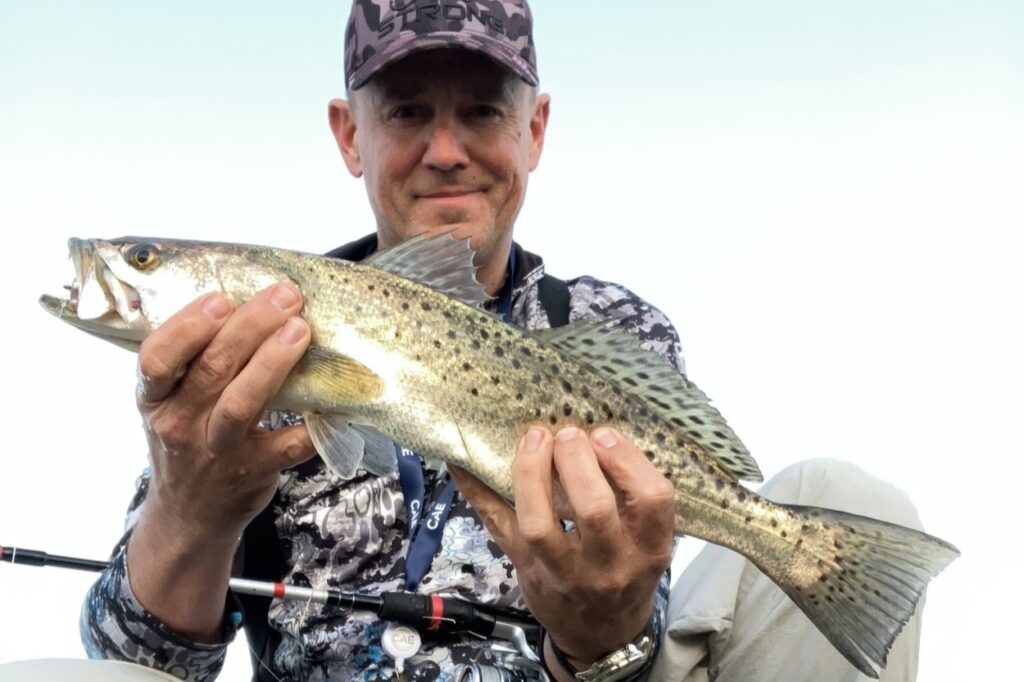
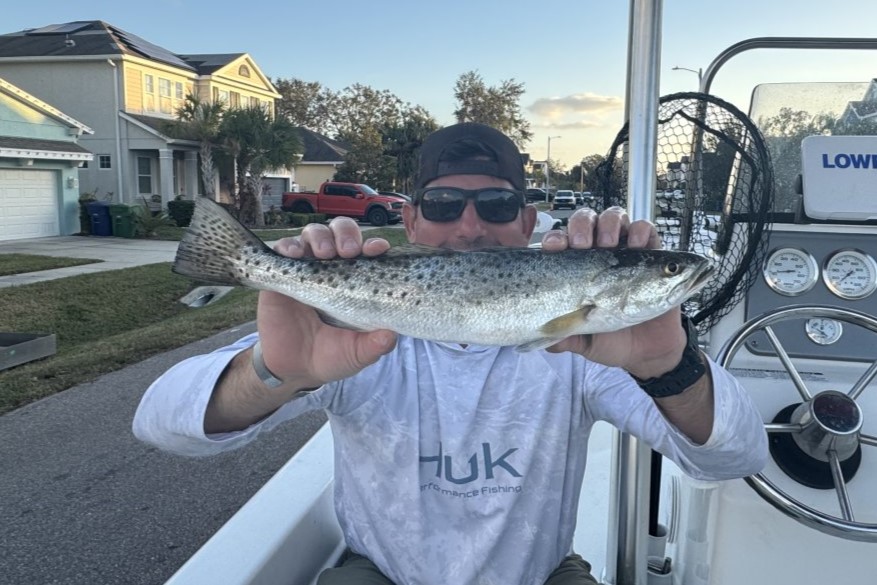
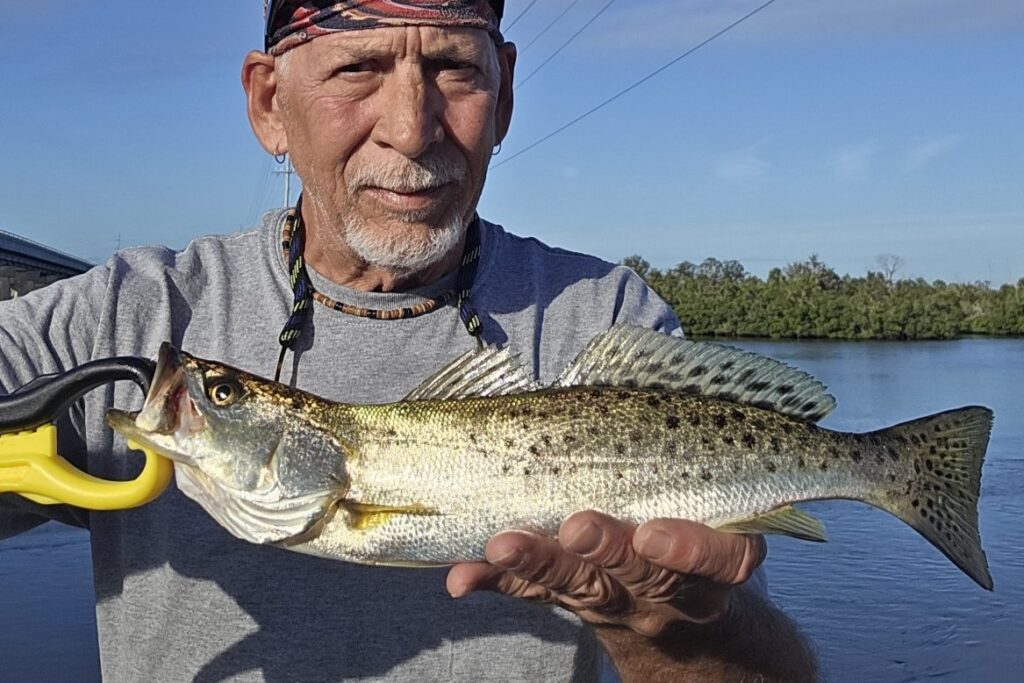
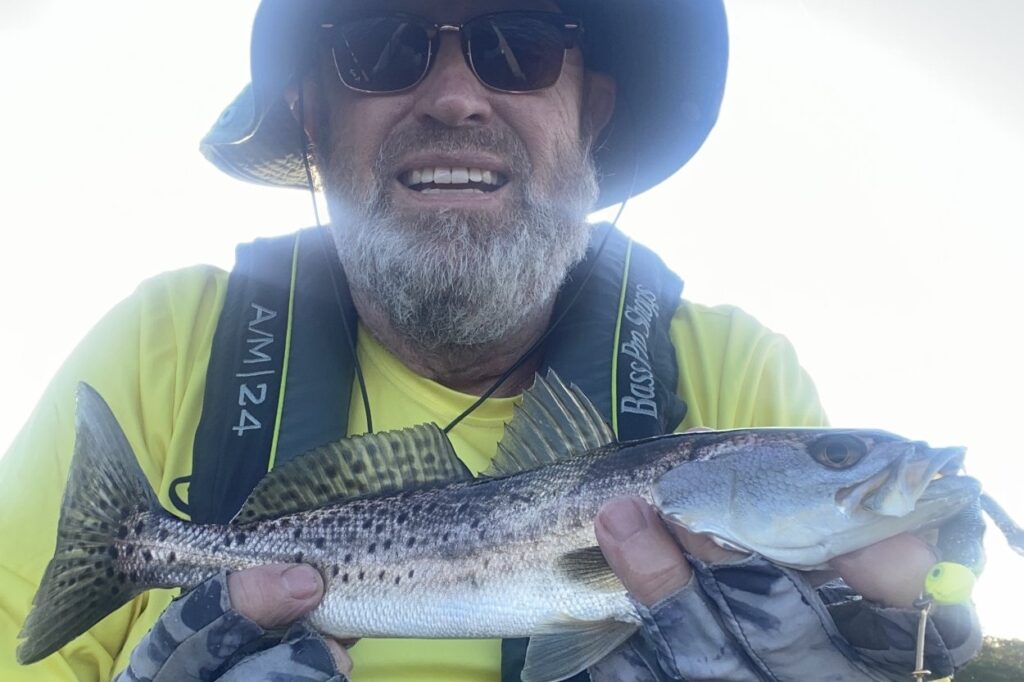
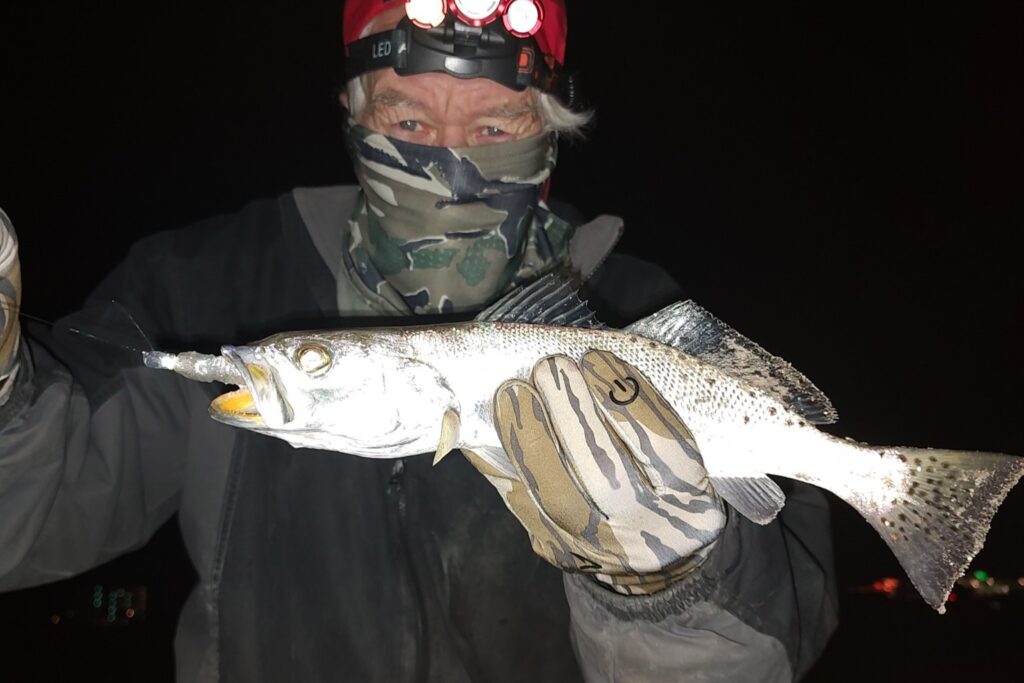
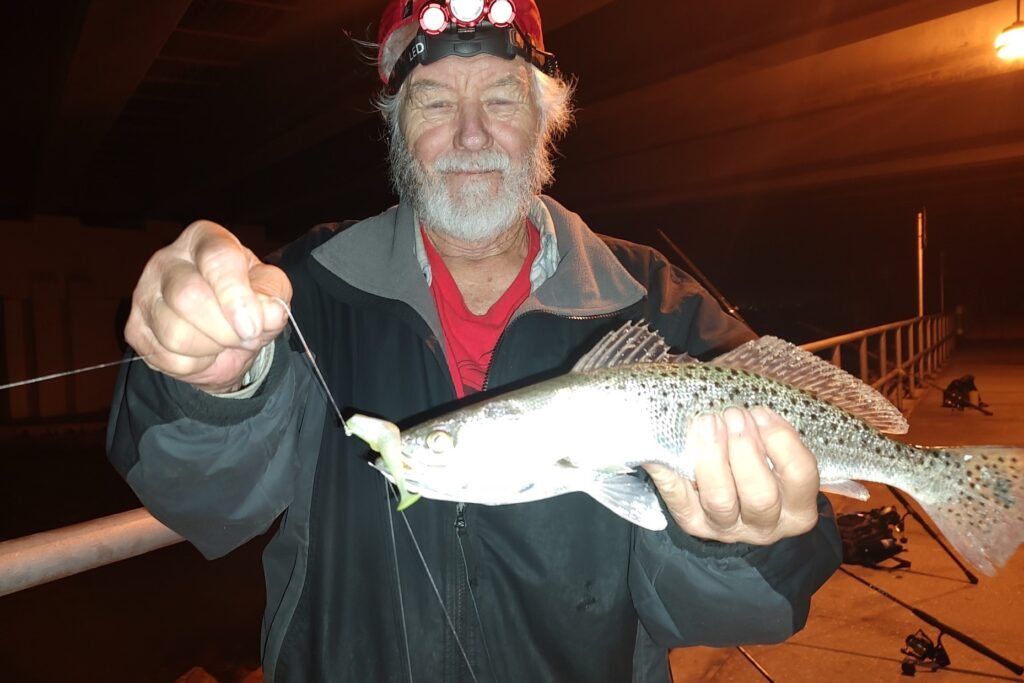
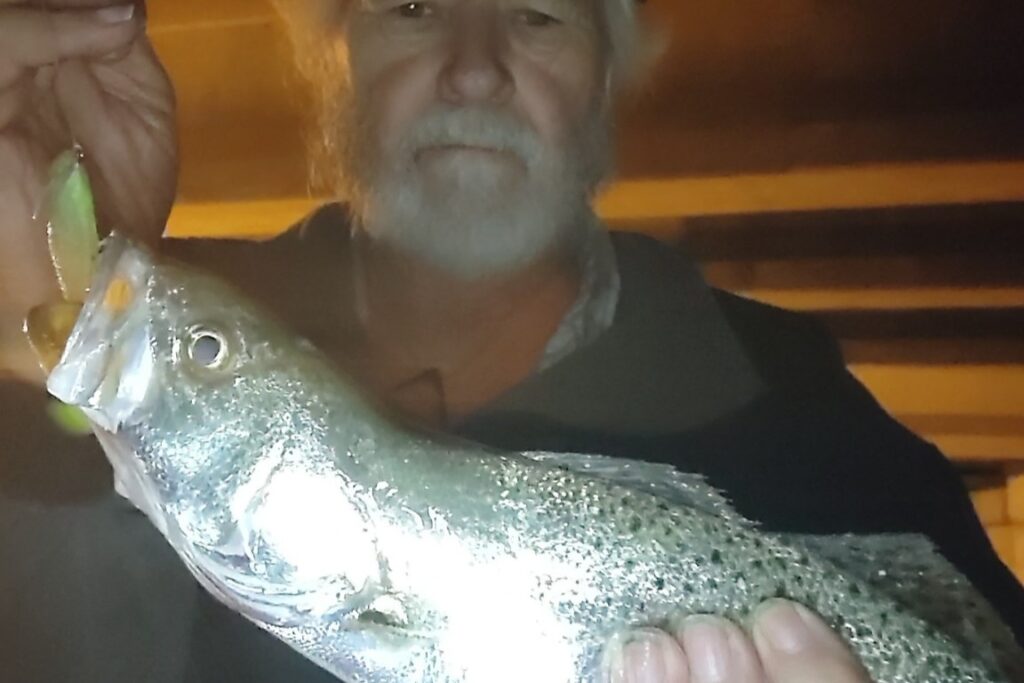
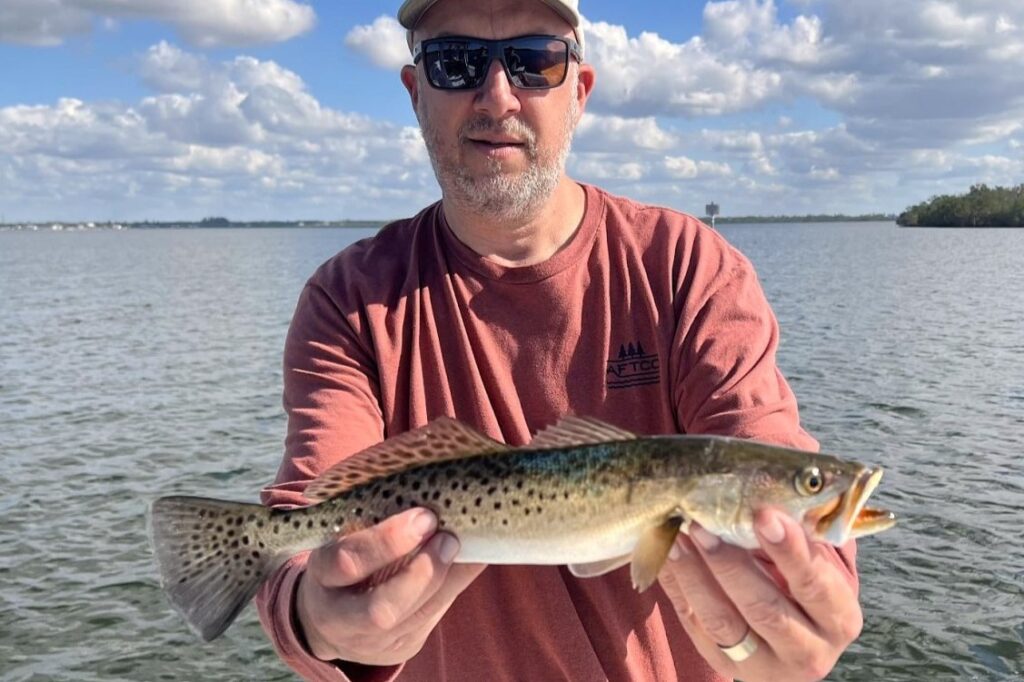
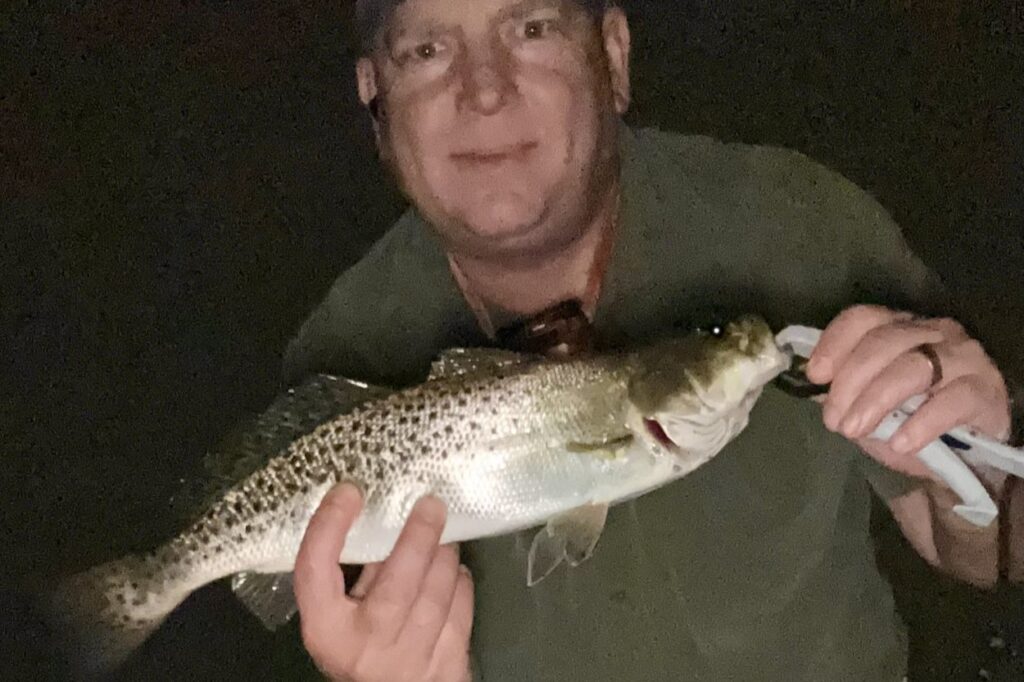
The redfish bite is firing on all cylinders, with slot and under-slot redfish being caught in great numbers. These aggressive feeders are everywhere—dock lines, mangrove shorelines, grass flats, oyster bars, and even around bridges and jetties. Live shrimp has been the go-to bait for consistent action, but don’t overlook soft plastics or cut baits, especially around areas where mullet are active.
Wintertime means sheepshead season is here, and these striped bait stealers are super active. Target them around hard structures like docks, piers, bridges, jetties, and rock piles. Look for barnacle-covered surfaces or areas with oysters to find the best concentrations. Use small hooks, light tackle, and minimal weight, with baits like shrimp, fiddler crabs, or barnacle chunks. These fish are delicious on the dinner table and worth the effort!
Trout action is heating up across the board, with larger fish showing up in cooler waters. They’re holding in diverse habitats, from dock and bridge lights at night to flats, mangroves, and oyster bars during the day. Focus on areas where baitfish or shrimp are present, as these ambush predators rarely stray far from their prey. Soft plastics or live shrimp are top choices for consistent bites.
Snook have moved deep into the upper and back bay areas for the cooler months. Look for them around the mouths of creeks, rivers, and bayous. They’re less aggressive in colder water, so focus on solunar major and minor feeding times to maximize your chances. Slow-moving lures or well-placed live baits will yield the best results.
The flounder bite continues to improve, with more fish showing up around sandy areas near structures. Look for sandbars around passes or sandy flats adjacent to oyster bars and mangroves. Work soft plastics or live bait close to the bottom to entice these ambush predators.
While pompano are still spotty, they’re worth targeting if you’re up for a challenge. Bounce pompano jigs along sandy bottoms near passes, bridges, or other structures. They can be finicky, but persistence pays off with these tasty fish.
Inshore waters are alive with bonnethead and blacktip sharks, offering exciting opportunities for anglers looking to battle these apex predators. Use cut bait or live bait rigged on heavy leaders around passes, beaches, and the bridges.
Fishing Tips
- Snook: Use live baits like greenbacks, threadfins, and shrimp, or try flair hawks and soft plastics at night.
- Redfish: Look for them around mangroves, oyster bars, and flats, and use dead baits during higher tides.
- Trout: Target them with soft plastics, white bait, and shrimp around deeper flats and potholes.
- Tarpon: Target them during the full moon with crab flushes, making it an ideal time to target them.
- Flounder: Find them near sandy bottoms and structures, biting on bottom baits.
- Pompano: Be prepared to move frequently to stay on their bite.
- Sharks: Use big dead baits in areas with moving water.
NEarshore Fishing Report
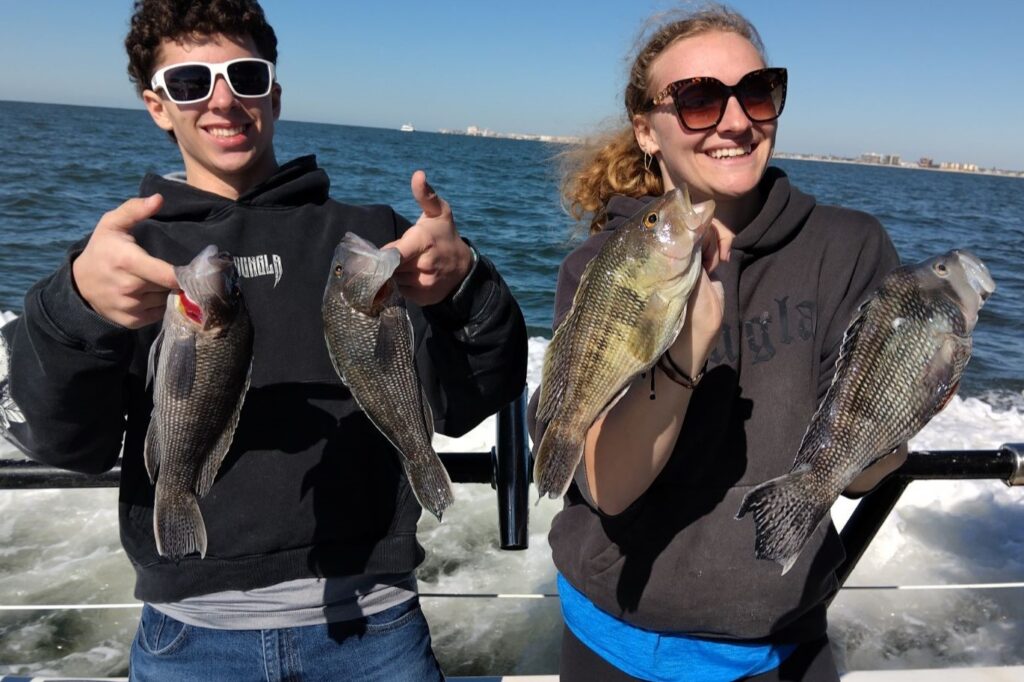
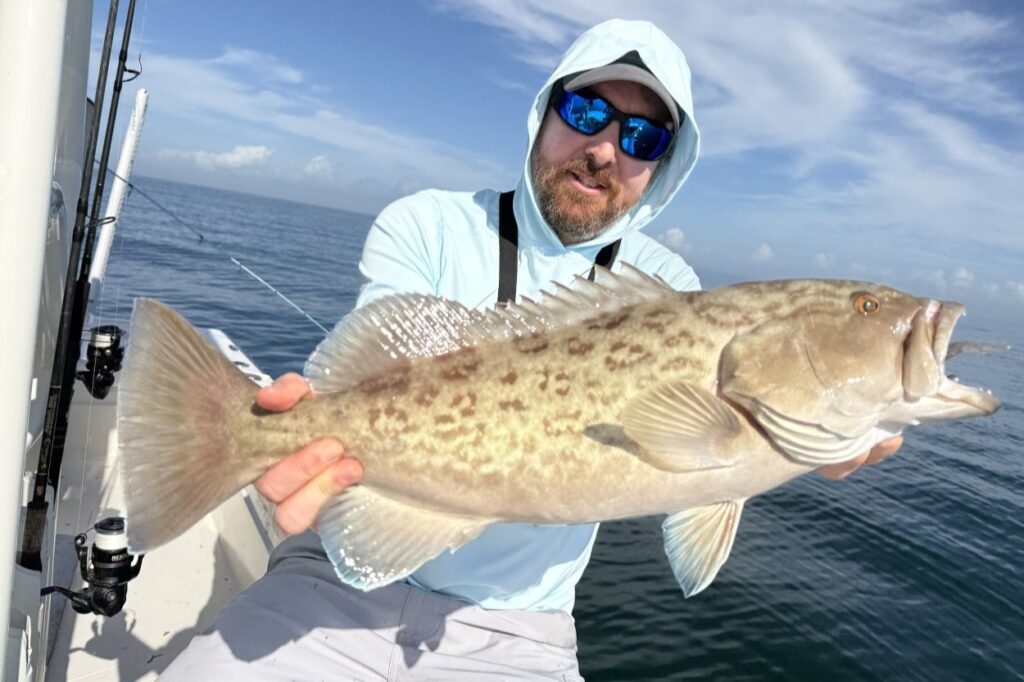
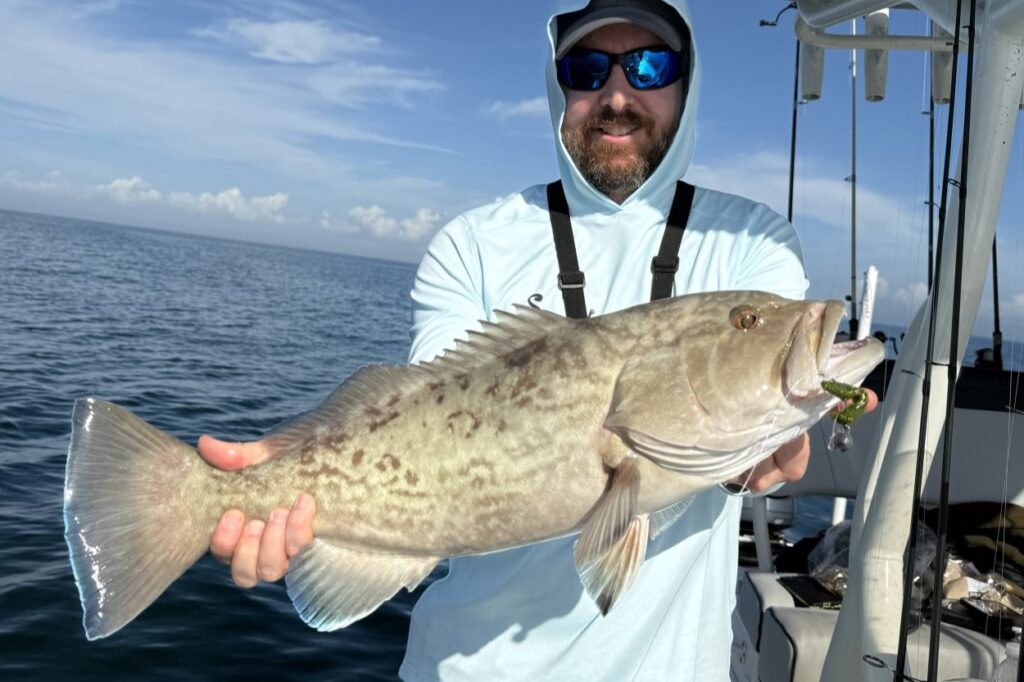
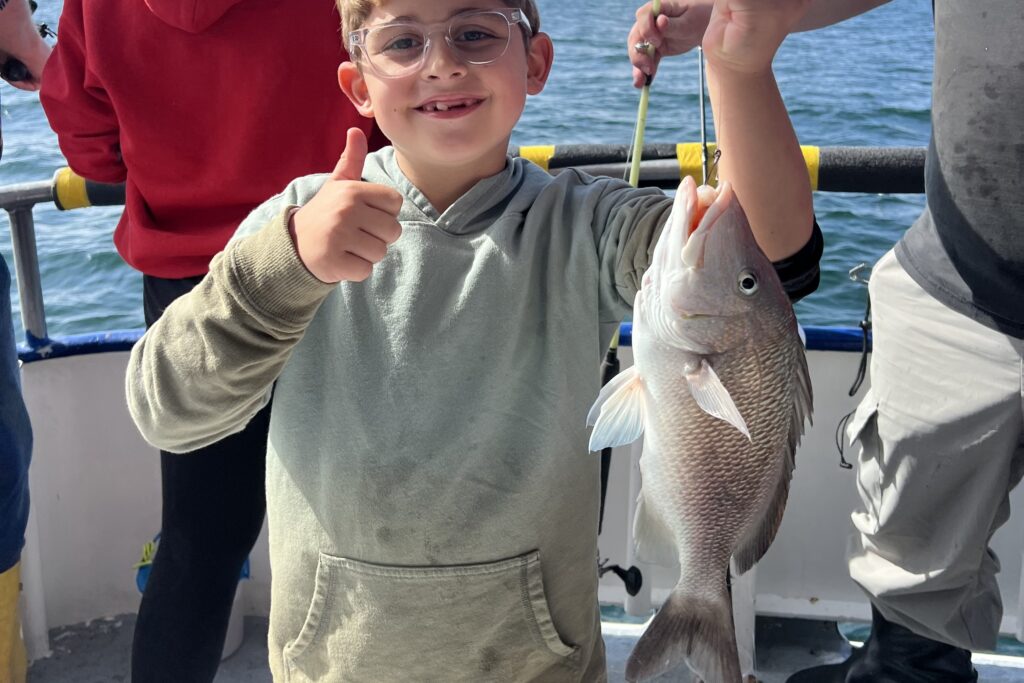
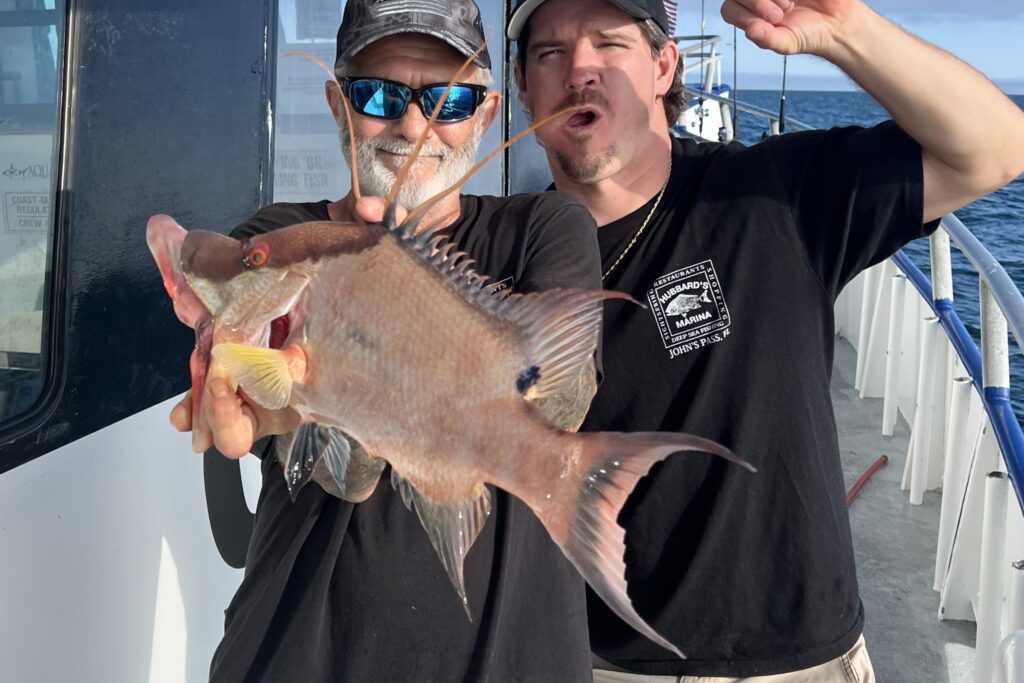
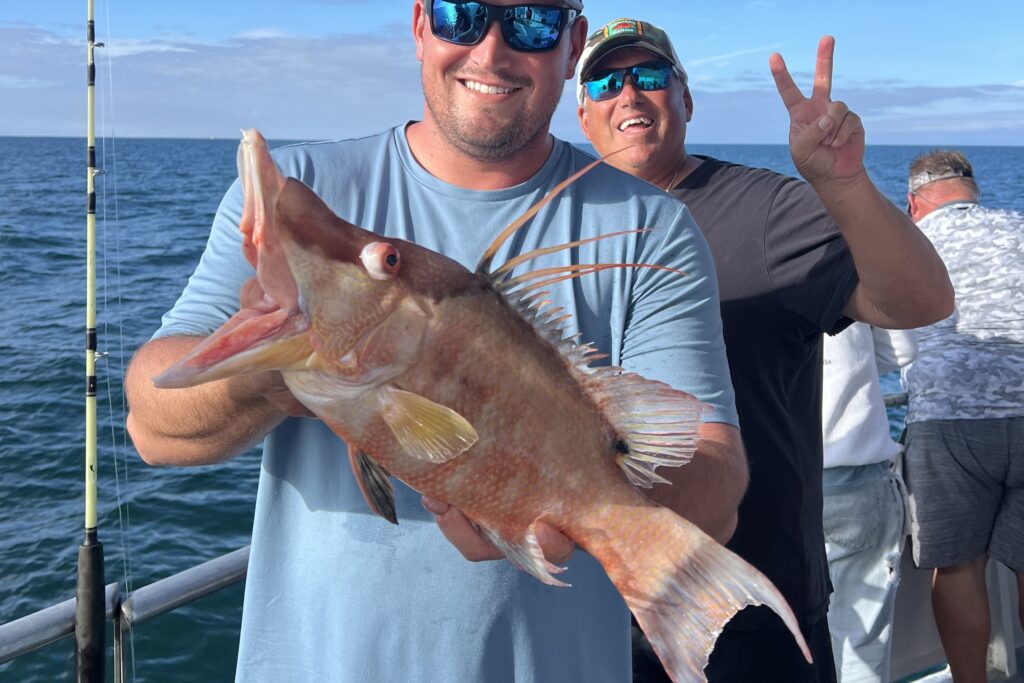
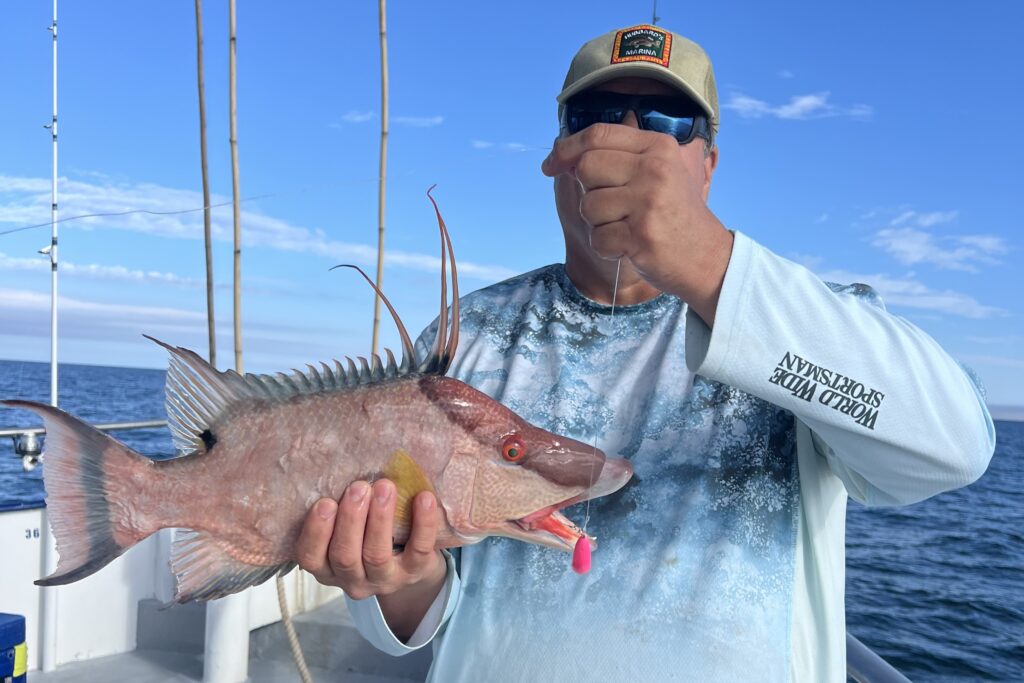
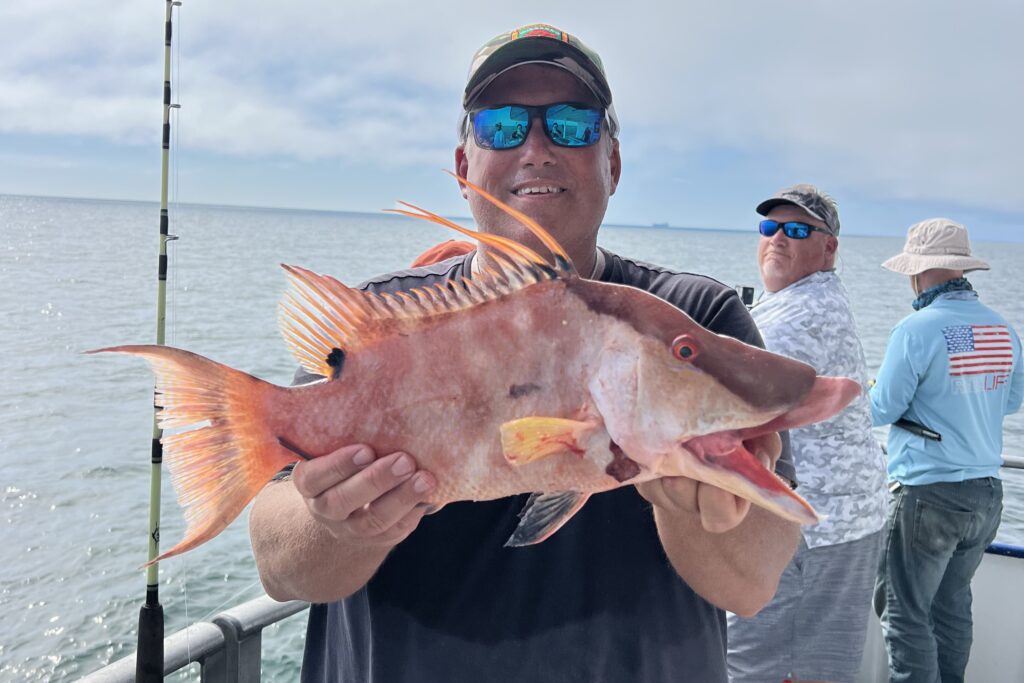
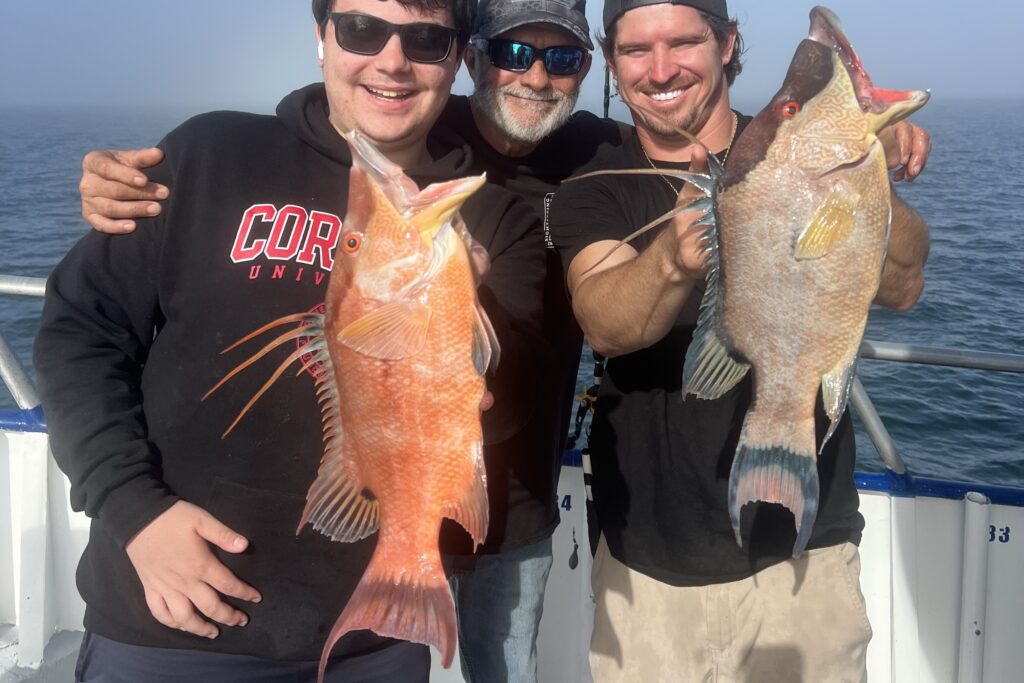
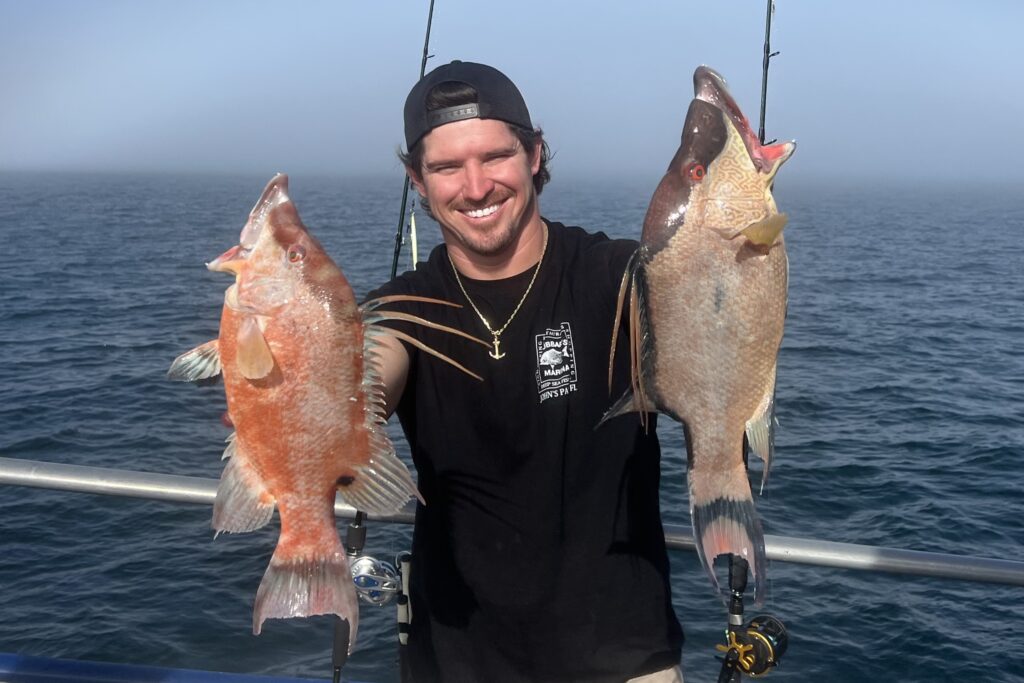
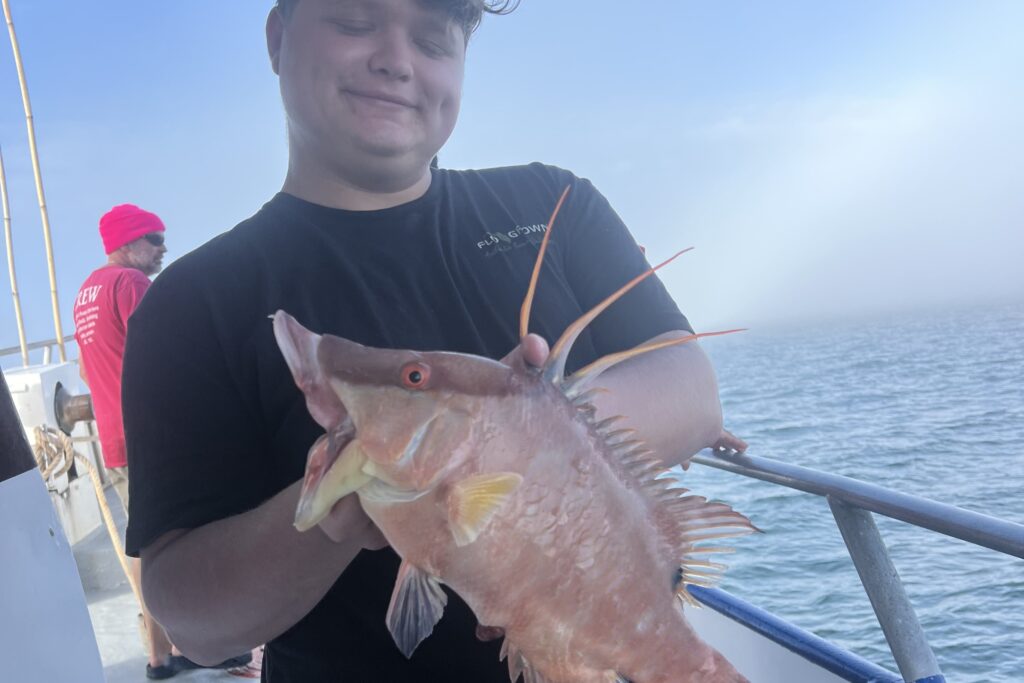
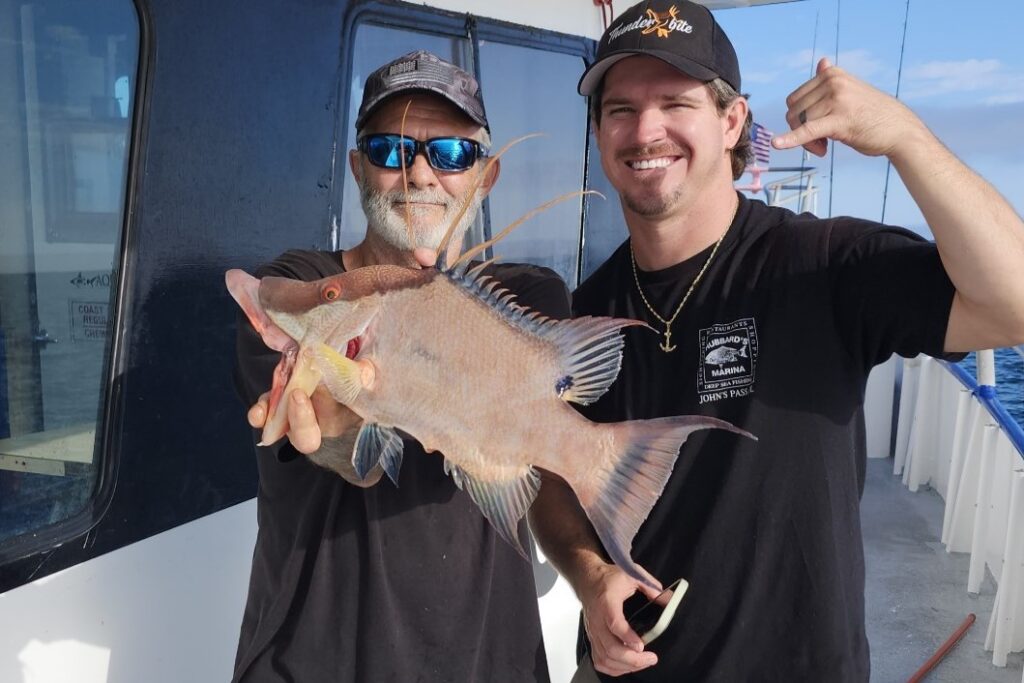
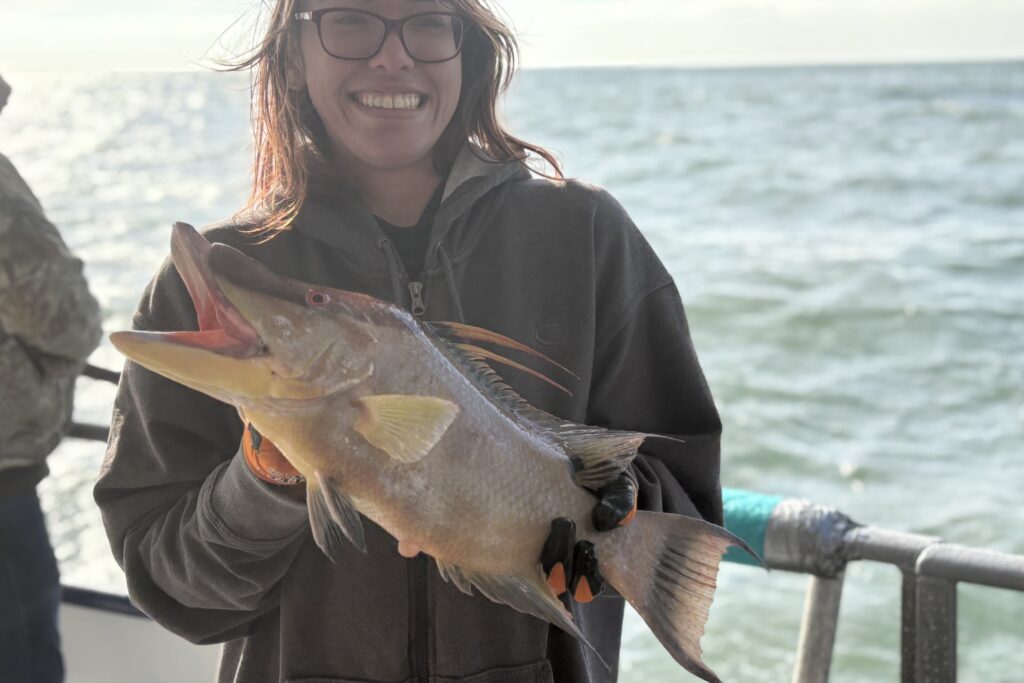
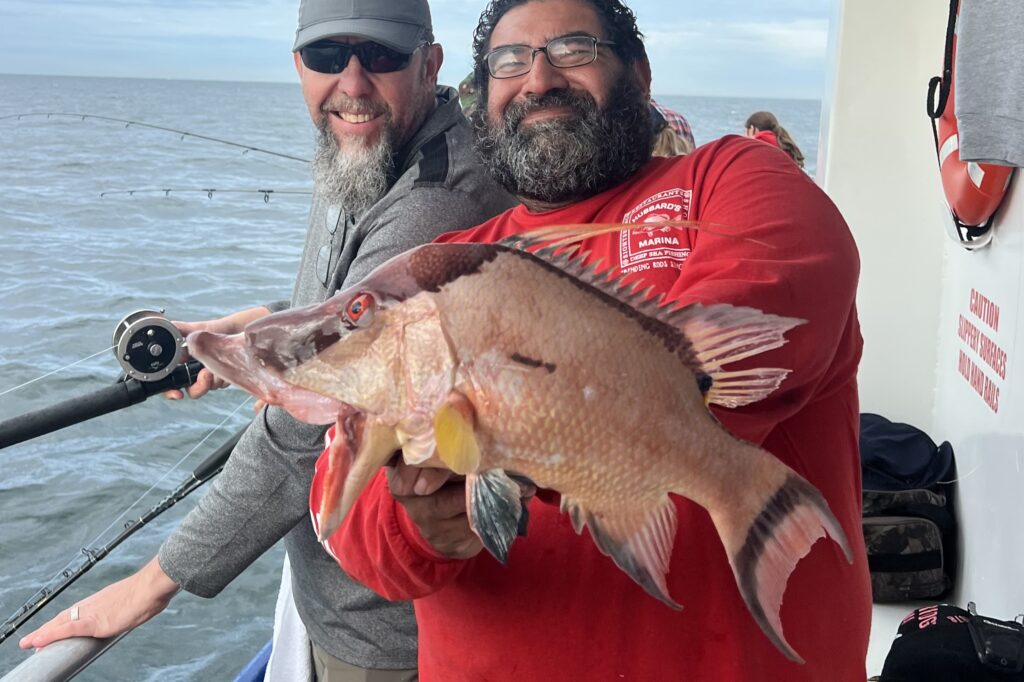
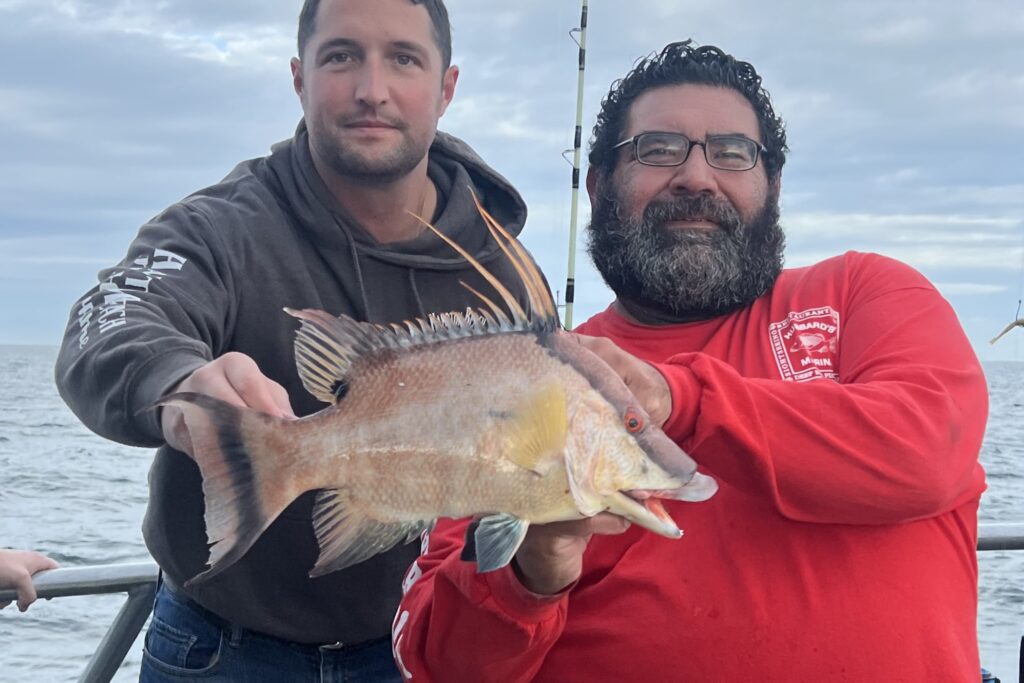
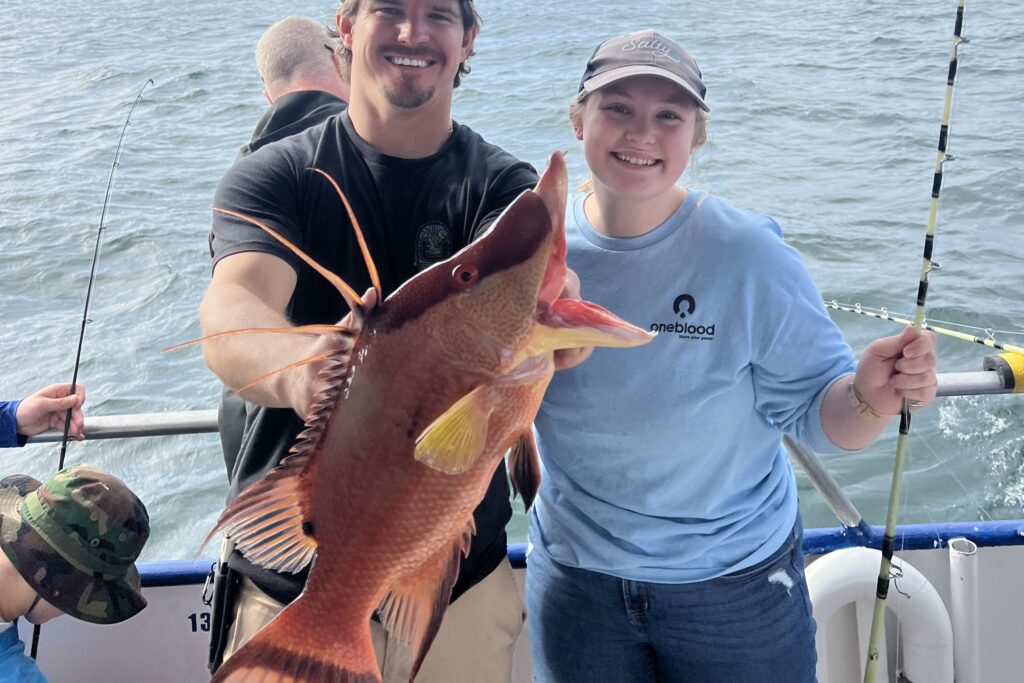
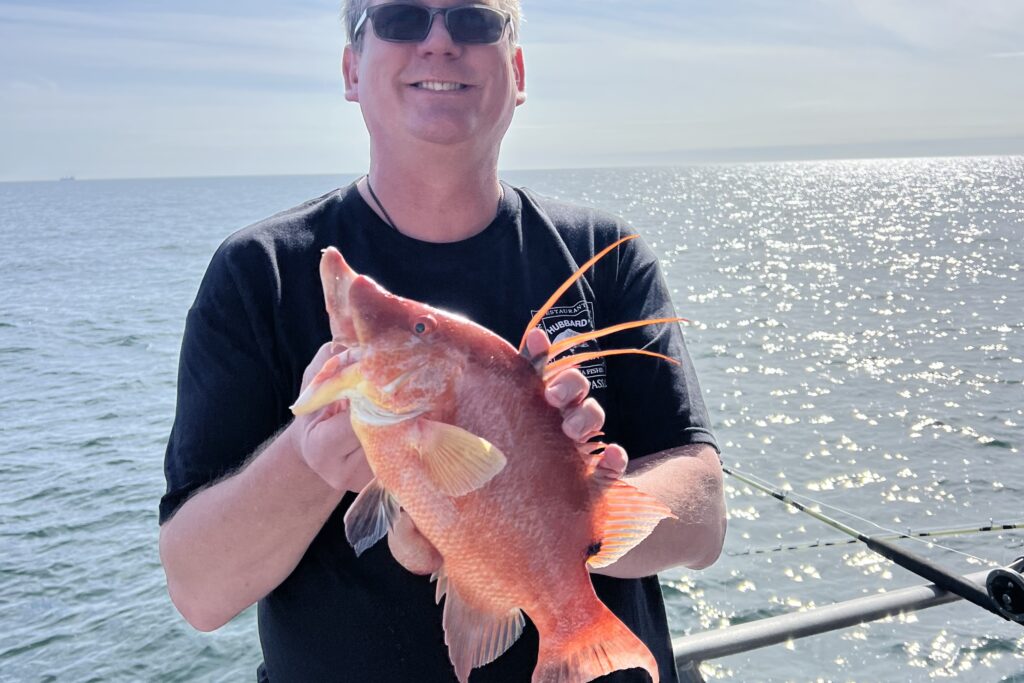
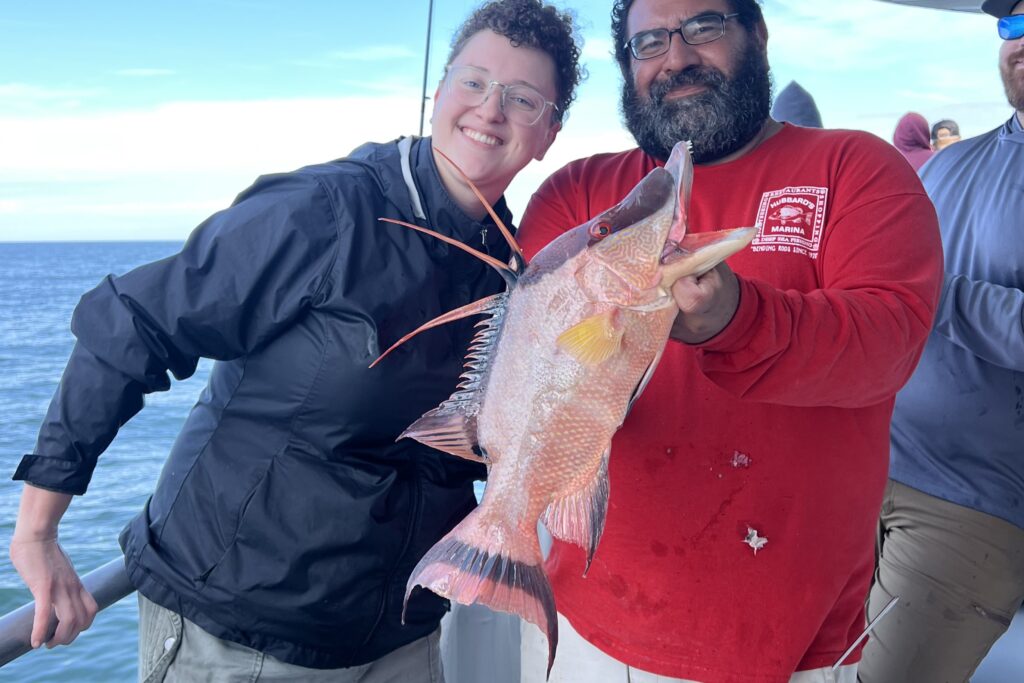
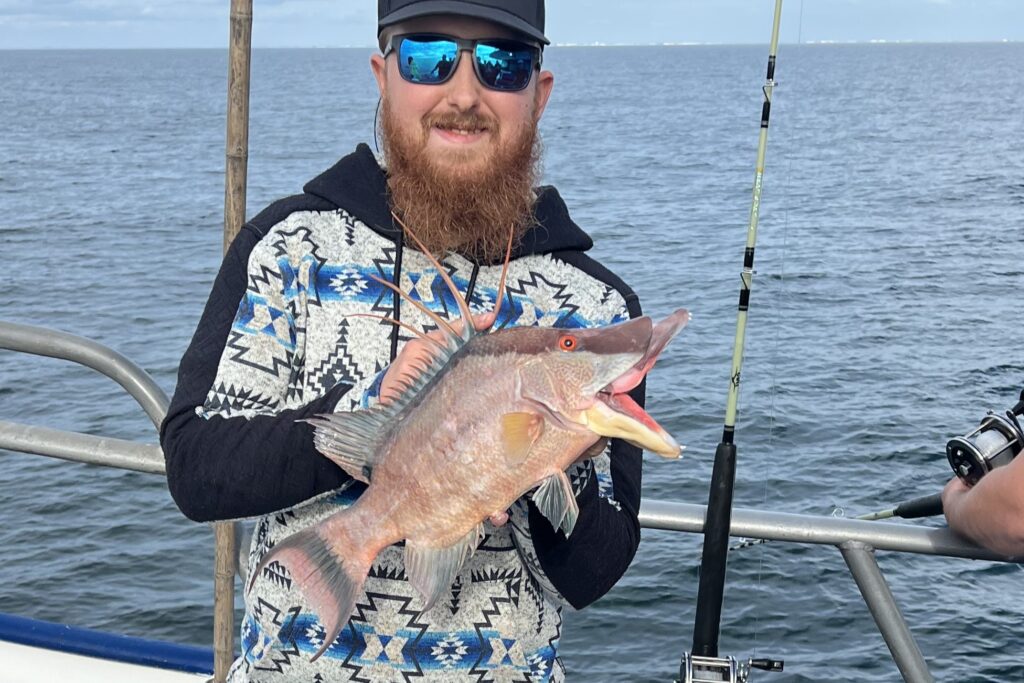
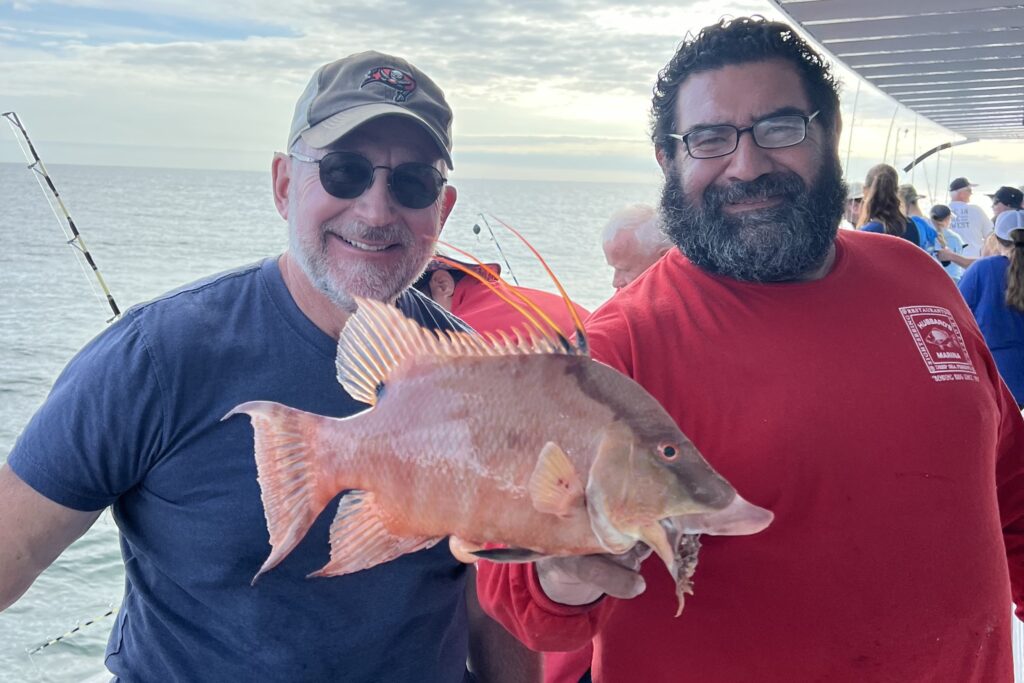
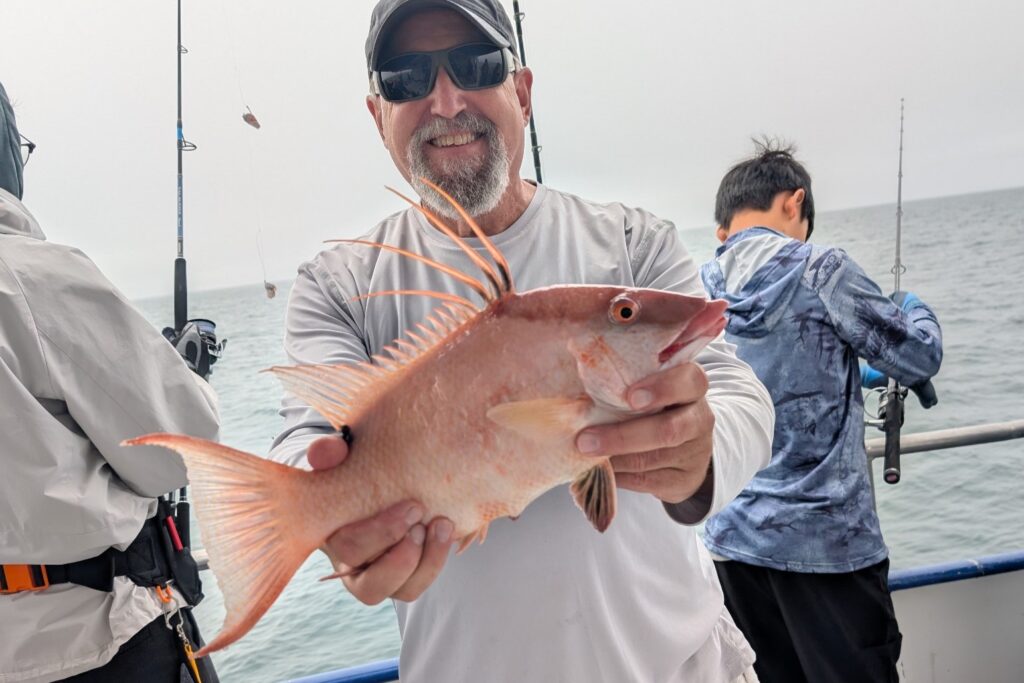
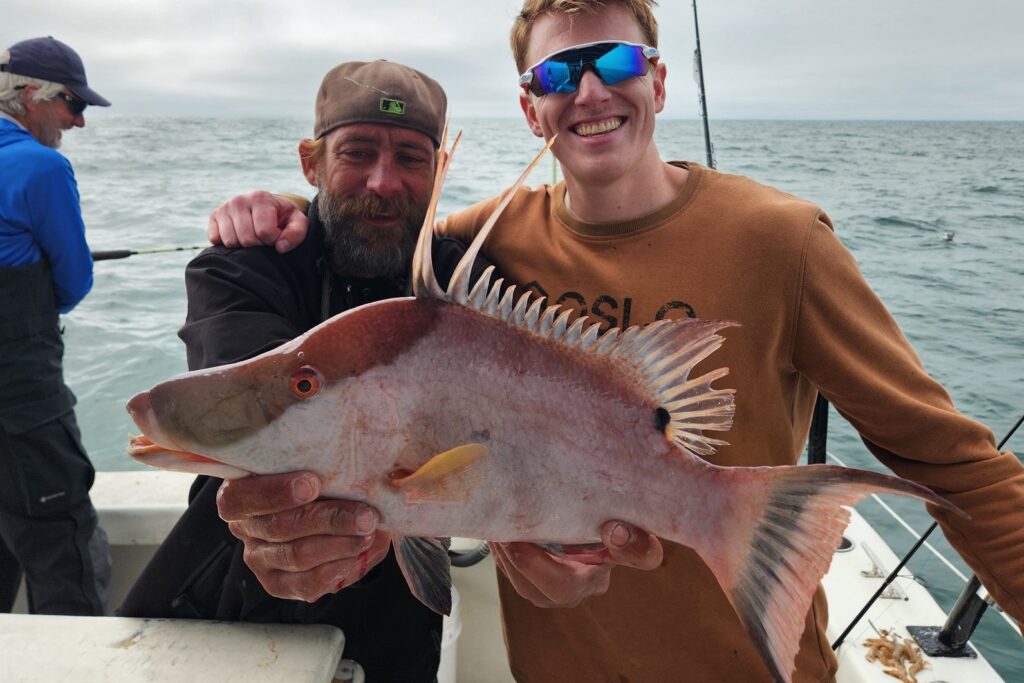
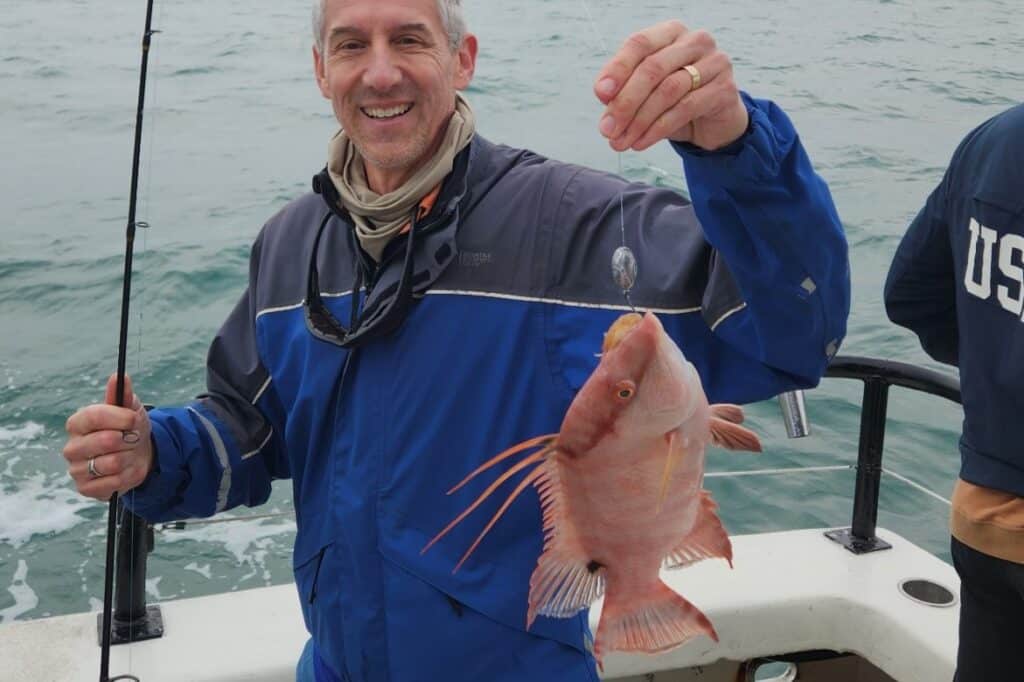
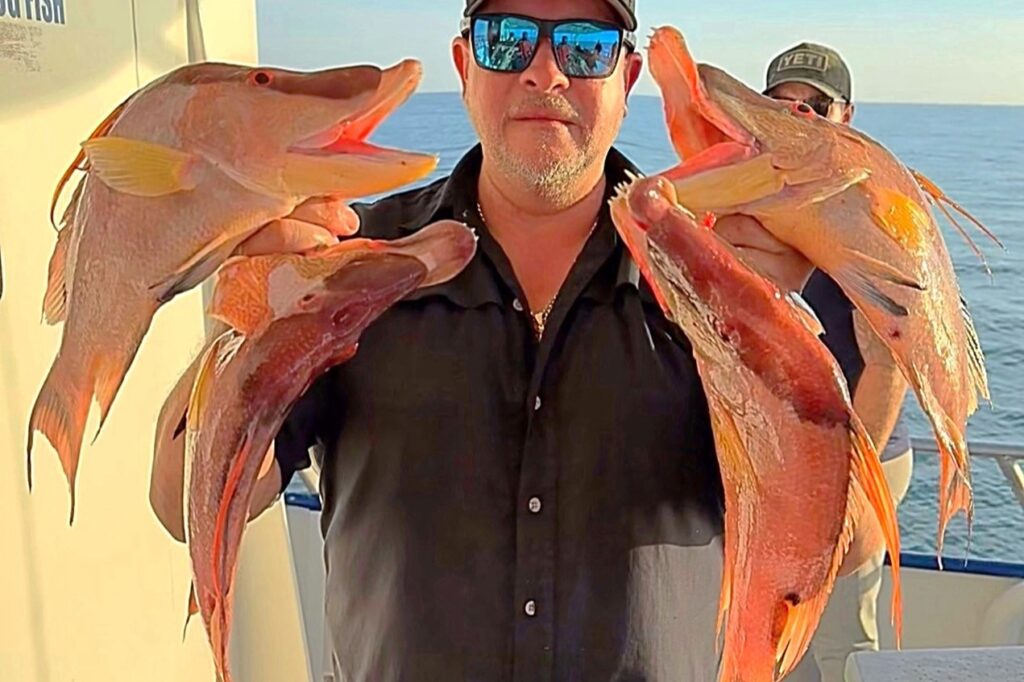
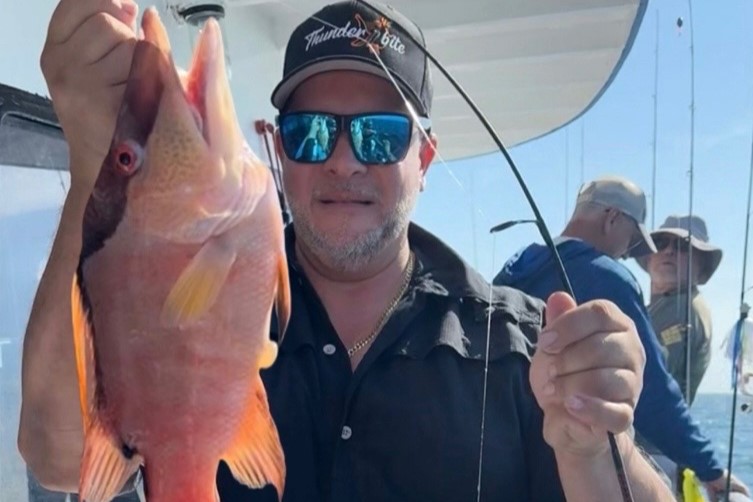
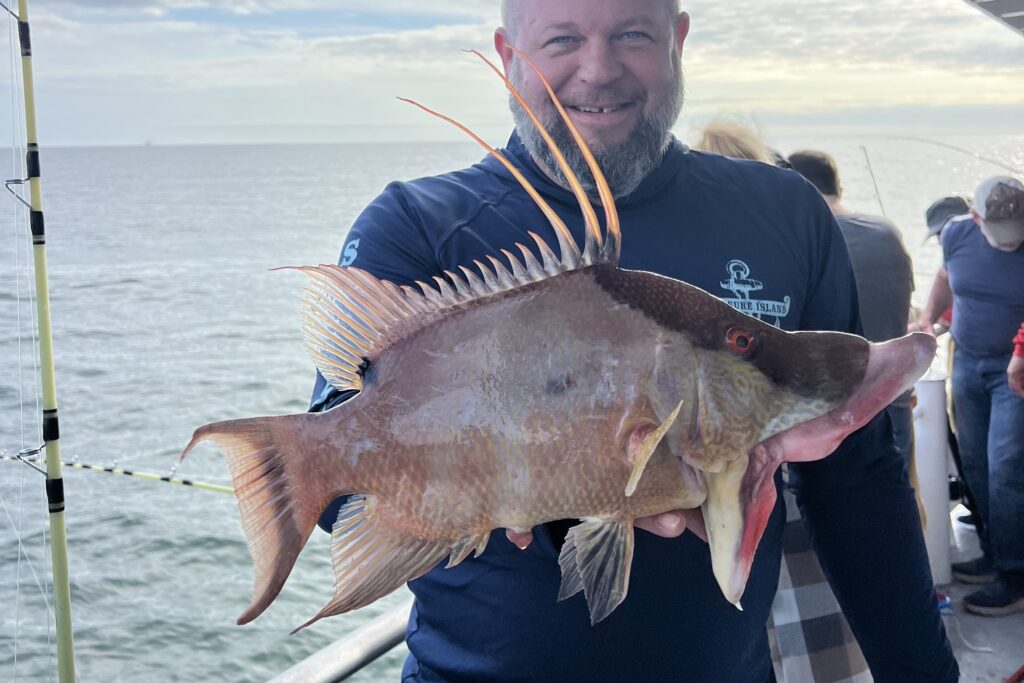
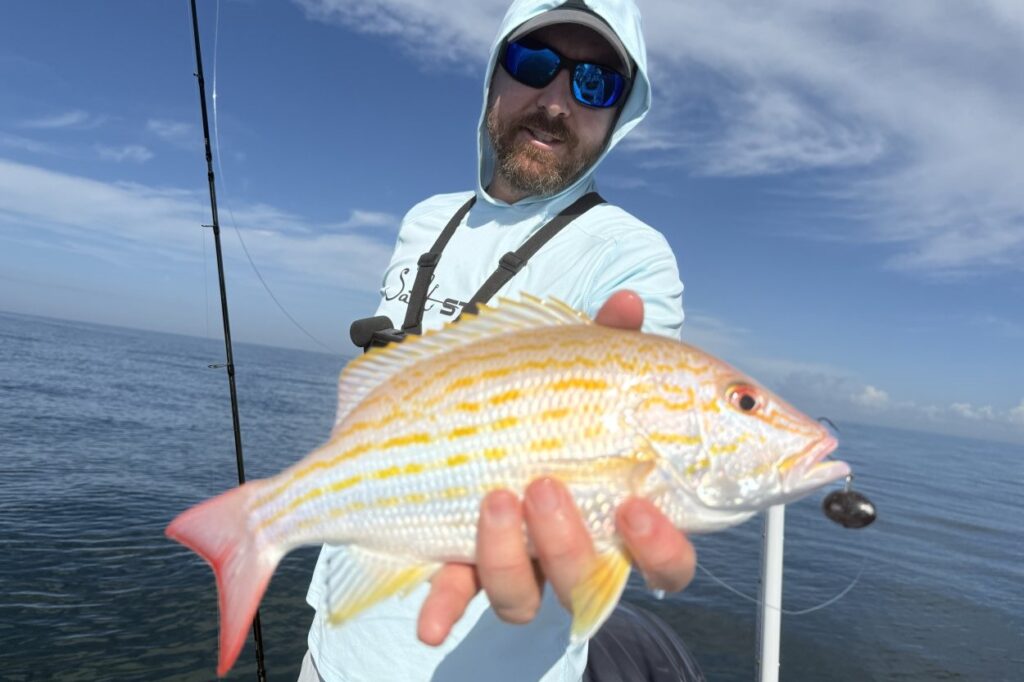
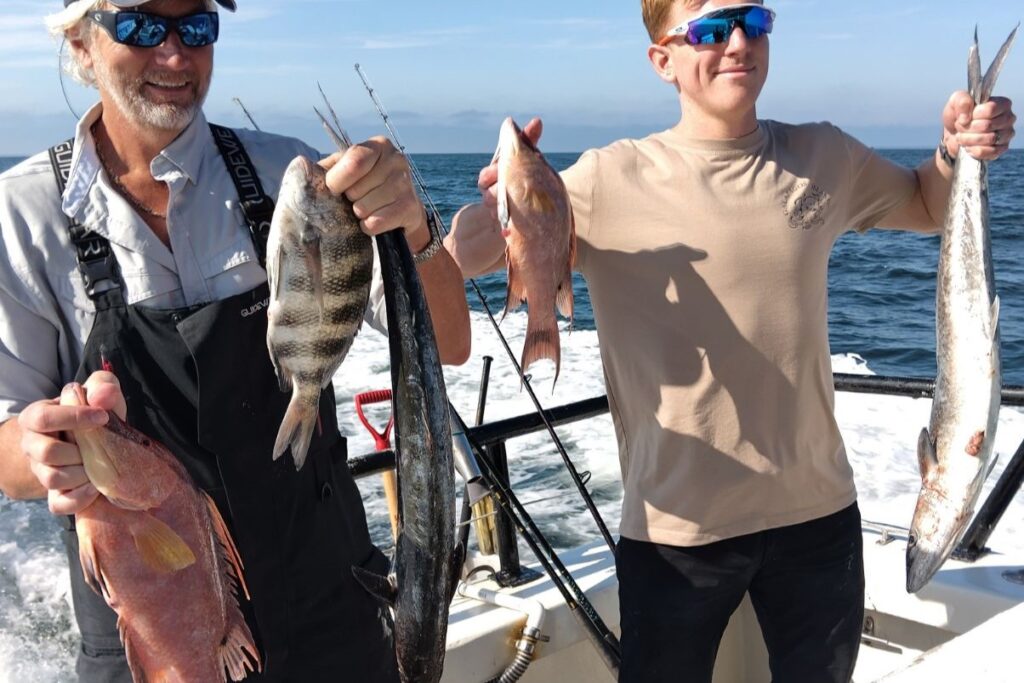
The hogfish bite has been consistent nearshore, especially around the 40ft mark. Our 10-hour all-day trips are producing solid results, with some success on 5-hour half-day trips as well. Use light tackle, with 30lb fluorocarbon leaders, 3-4/0 hooks, and 1-2oz weights. Live shrimp is the bait of choice. Hogfish prefer areas with small structures and shell bottoms near ledges, making precise targeting essential. We are fishing a bit shallower near shore lately to ensure we avoid the lane snapper that are closed, but they will re open January 1st. We will then be afforded much more flexibility to fish a bit deeper to target the lanes, and maybe catch some red grouper too that will open the same day as the lanes. However, we can then push inshore if the bite isn’t super hot to then capitalize on some hogfish opportunities as we typically see them best around this shallower 40ft mark. We do catch hogfish deeper, but they are a bit harder to target deeper where they are more numbers of quicker biting more aggressive fish like lanes, red grouper, mangroves and more.
Mangrove Snapper have been around near shore in some good sizes. We see some nice ones while targeting the bigger lanes and hogfish on live shrimp and lighter tackle. Once we start fishing deeper after the first when lanes and red grouper are re opened we should see even more mangroves and the small chunks of cut threadfin on double snell rigs become an even better mangrove snapper option out deeper around 70-100ft of water.
Lane Snapper will re open at the start of the new year, and we are super pumped to get plenty of these good eating fish once again. They love the live shrimp, but they will take small chunks of squid or threadfins too.
Red grouper will re open at the start of the new year too. They should be open until around the end of may before closing for the remainder of the 2025 fishing year. We get them near shore occasionally on live pinfish or larger cut dead baits like the squid strips or a whole threadfin with the tail cut. Fishing around 80-100ft deeper near shore is the best place to get them or beyond offshore.
Help spread the word about what to do if you hook or entangle a bird. Never cut the line; instead, reel in the bird carefully to dehook and release it. If you accidentally hook a dock, break the line at the hook to avoid leaving any line in the water. Seabirds with fishing lines hanging from them are becoming more common, and this could lead to the closure of fishing areas.
Rising concerns about bird entanglements might result in closing fishing spots, impacting the few available locations around Tampa Bay from shorelines, docks, bridges, or piers. Learn more in our recent podcast with Salt Strong: https://www.saltstrong.com/articles/shutting-down-fishing-at-busy-pier/.
Fishing Tips
- Red Grouper: Target the deepest near shore waters with big dead baits or solid live baits. Use 60 lb test and 7/0 hooks for best results.
- Red Snapper: Use big dead baits like whole squid and bonita strips with heavy tackle to focus on larger fish. Prime trips include the 12-hour extreme, 39-hour, and 44-hour trips.
- Scamp Grouper: Use small to medium pinfish and cut threadfin, especially while targeting mangrove snapper.
- Mangrove Snapper: Near shore, use live shrimp and small chunks of threadfin on 30-40 lb test with 3-4/0 hooks. Offshore, use bigger chunks of cut threadfin or medium pinfish on 40-60 lb test with 5-7/0 hooks.
- Vermillion Snapper: Start around 100 feet of water using cut squid or threadfin. These fish are aggressive and not leader-shy.
- Yellowtail Snapper: Use shrimp, cut squid, and threadfin.
- Pelagic Species: Keep flat lines and pitch rods ready for sailfish, kingfish, wahoo, tuna, and mahi mahi.
Offshore Fishing Report
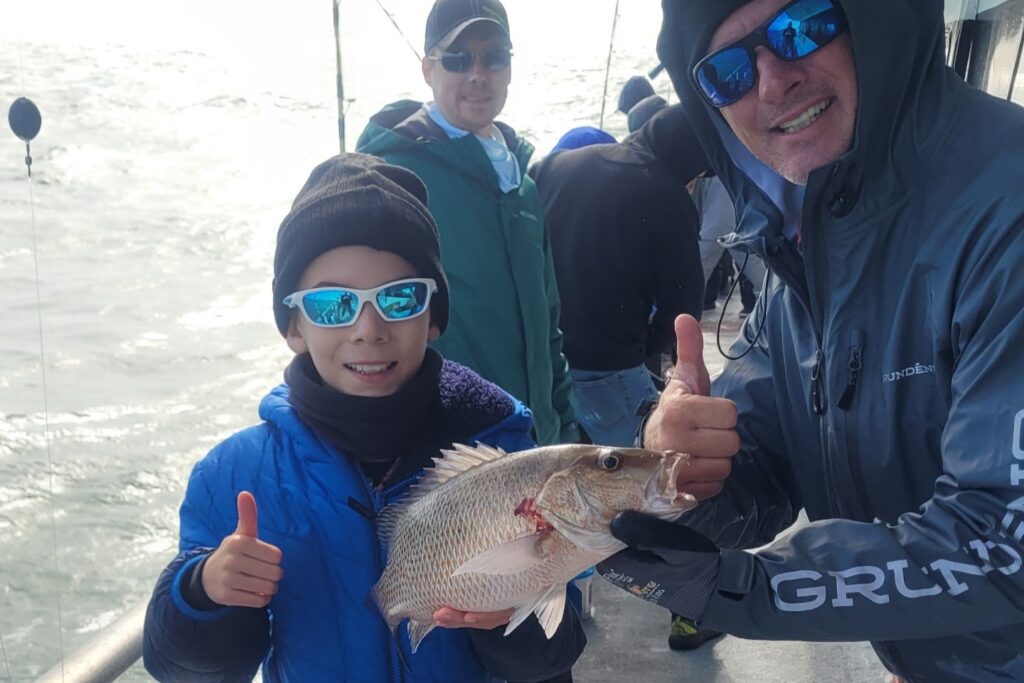
The red snapper season is winding down as the year closes, but the bite remains red-hot. We’ve seen big red snapper coming up consistently, with both big live baits and dead baits like bonita strips, whole squid, and threadfins producing excellent results. For larger fish, opt for big baits paired with heavier tackle, such as 60-80lb test line and a 10/0 hook. These setups help avoid smaller fish and ensure you land the trophy-sized snapper you’re after.
Scamp grouper have been cooperating nicely offshore, with live bait and threadfins being the go-to options. We see them most on the smaller to medium pinfish and around 50-60lb mainline and about a 6-7ot hook.
Triggerfish are biting well offshore, offering anglers a chance to catch one of the tastiest fish in the Gulf. Use small strips of squid or bonita, cut to around two inches long, to target these fish with smaller mouths. They’re a perfect addition to any offshore trip.
The mangrove snapper bite has been steady, with larger fish hitting live pinfish. We’re also seeing consistent numbers of mutton snapper, which have been a pleasant surprise. Both species are great targets for anglers looking for a challenge.
The pelagic bite has been exciting, with plenty of blackfin tuna coming in on recent trips. We’re also seeing nice kingfish and the occasional wahoo for those targeting surface waters. Whether trolling or flat-lining, the action is hot offshore right now.
Seasonal Openings:
- Red grouper: Open until the end of June
- Triggerfish: Open all year except June & July
- Amberjack: Open May, September & October
- Red snapper: (CURRENTLY) Open June 1st – August 27th (close August 28th at 12:01am)
- Gags: Will open September 1st until September 15 (close September 16th at 12:01am)
- All other species: Open all year
Remember that when fishing in deeper nearshore and offshore federal waters, the Descend Act requires you to have a descending device or venting tool “rigged and ready.” If you know how to use a venting tool, keep it prepared. If not, here’s some helpful advice: https://bit.ly/3L5HTnv. Using a descending device is straightforward and doesn’t require as much precision or practice as venting. You can even get over $100 worth of descending device gear for free by taking a short course on barotrauma mitigation, which helps more fish survive. The course only takes about 10-15 minutes, and you can learn valuable techniques to protect our offshore fishery. Spread the word by visiting: https://returnemright.org/.
TERMS OF REFERENCE-
Inshore: This covers the areas from the inner bays, through the bridges, and right up to the beaches.
Near Shore: This includes the coastal waters from the beaches up to twenty miles offshore, or up to a depth of 100 feet.
Offshore: This extends from twenty miles offshore or from a depth of 100 feet and beyond.
For more fishing reports, photos, videos, and other content, check out Hubbard’s Marina on Facebook, Instagram, YouTube, TikTok, Twitter, Pinterest, or Snapchat by searching for @HubbardsMarina. Remember our family motto: “If you’re too busy to go fishing, you’re just too busy!” Thank you for reading our report.
Capt. Dylan Hubbard, Hubbard’s Marina
Phone or text: (727) 393-1947
Website: Hubbard’s Marina

